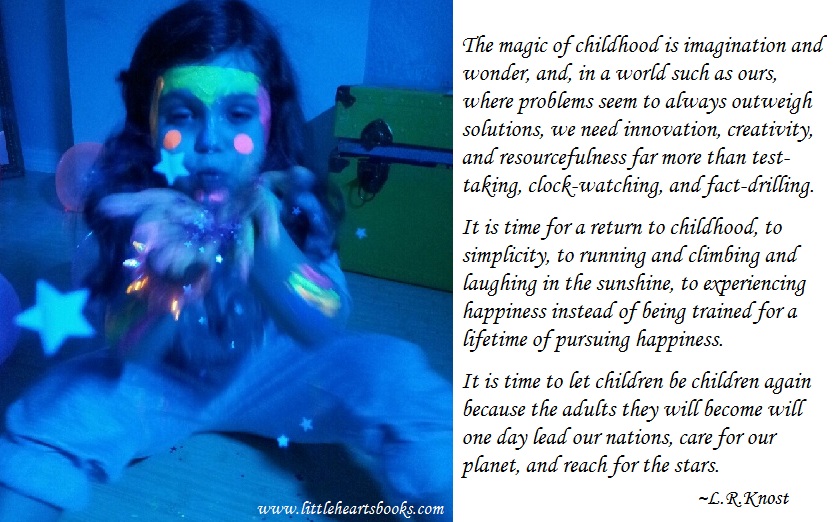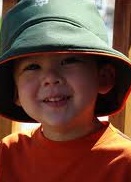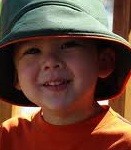Why Whining is a Win!
[Reprinted from Whispers Through Time: Communication Through the Ages and Stages of Childhood by L.R.Knost. Two Thousand Kisses a Day: Gentle Parenting Through the Ages and Stages and The Gentle Parent: Positive, Practical, Effective Discipline also available through Amazon and other major retailers.]
 It’s seven o’clock and you’re finishing up the dishes before starting bedtime baths. And then it starts…the whining. Every. Single. Night. Your four-year-old knows the routine. She knows you are going to read her favorite bedtime book. She knows you will let her choose which pajamas to wear. She knows she has to brush her teeth. But that doesn’t stop her from standing in the kitchen night after night whining about the same things.
It’s seven o’clock and you’re finishing up the dishes before starting bedtime baths. And then it starts…the whining. Every. Single. Night. Your four-year-old knows the routine. She knows you are going to read her favorite bedtime book. She knows you will let her choose which pajamas to wear. She knows she has to brush her teeth. But that doesn’t stop her from standing in the kitchen night after night whining about the same things.
So what’s the deal? Short-term memory loss? An innate desire to drive you crazy? A disorder of the vocal cords that makes using a normal voice impossible after the sun sets and every time she doesn’t get her way all day long?!?
Here’s a shocker for you: Whining is actually a sign of maturity! Yep, that unnerving, endless, nails-on-a-chalkboard, make-your-head-explode whine is a sign that your little one is growing up and, get this, gaining self-control! I can see your heads shaking, but read on, parents, caregivers, and bleeding ears of the world, read on.
Whining, believe it or not, is an advanced skill. Babies come into the world with exactly one form of verbal communication–crying. They may smack their lips and root for the breast when hungry. They may arch their back or wiggle in discomfort when they need a diaper change. But when physical expressions don’t result in needs being met or their needs are emotional rather than physical, then crying is always the ‘default’ communication. Every need, every discomfort, every bit of loneliness or anxiety or frustration or stress has to be communicated through that one single venue.
Over time as babies grow into toddlers, they begin to learn new ways to communicate, pointing, grunting, picking up a few words here and there, and they move into a more interactive stage wherein they make attempts to communicate in these new ways, but fall back very quickly into crying if they aren’t understood and responded to quickly.
As time goes on, toddlerhood gives way to the preschool years and language skills advance, becoming the main source of communication for a little one. But even so, their grasp of language is limited and their prefrontal cortexes (center of forethought/pre-thinking skills) are still developing. This leads to a rather dichotomous situation in which they know what they want to say, but often can’t quite put the words together quickly or clearly enough for us oh-so-impatient adults.
As they work to communicate, their frustration levels rise and stress hormones sap the blood flow from those underdeveloped ‘thinking’ portions of their brains and, just when they need the use of language the most, they begin to lose the ability to articulate their needs. As toddlers they would fall quickly back into crying at this point, but as preschoolers their more advanced self-control helps them to avoid immediately dissolving into tears and, instead, they fall into the ‘middle-ground’ of whining.
Whining is, in fact, just an advanced form of crying and, as such, is just as grating on the nerves as crying because it is designed to get the attention of a caregiver. The difference is actually in our attitudes toward whining. We accept crying as a normal part of baby and toddlerhood, but label the whining of a preschooler ‘bratty’ and ‘spoiled’ and refuse to listen to them until they ‘use their normal voice’ just when they need us to listen the most!
If we, as adults, would adjust our mindsets to accept the normalcy of whining, it would lose a bit of its power to annoy while enabling us to respond empathetically to our children when they’re mustering all their newly-developed coping skills to avoid a meltdown.
So, what can we do when our little ones lapse into ‘whine-eze’ and we feel like tearing our hair out? Well, as always, an ounce of prevention is worth a pound of cure:
- Pay attention to the time of day whining seems to occur most often.
- Watch for triggers such as hunger, missed naps, and over-hurried schedules.
- Make whatever adjustments you can to prevent the whining before it starts.
- If all else fails and the whining does commence, remember that your little one is struggling to communicate in that moment. Respond by slowing down, sitting with them or kneeling down in front of them, and giving them your full attention.
- Use a quiet, soothing tone to reassure them, and listen patiently all the way through as they work their way back through the frustration and find the words to express themselves.
- You may not be able to give them the toy or snack or whatever else it is they want at that moment, but giving them the chance to be heard is often enough to forestall an all-out meltdown.
More than anything, though, giving your little ones the gift of your time and attention when they need it most (and often seem to deserve it least) will help foster that all-important connection that provides the basis for gentle guidance and boundary-setting. And, as an added bonus, children who feel heard tend to outgrow the whining stage much earlier than children who feel like they have to fight to be heard.
Related posts:
The Gift of a Strong-Willed Child
Backtalk is Communication…LISTEN
When Children Act Out ~ Reflecting Our Emotions
Bridge Over Troubled Waters~Parenting a ‘Problem’ Child
The Taming of the Tantrum: A Toddler’s Perspective
Practical, Gentle, Effective Discipline
200 Ways to Bless Your Children with a Happy Childhood
When Children Hit~10 Tips for Parents
Toddlers, Tantrums, and Time-Ins, Oh My!
 Award-winnning author, L.R.Knost, is the founder and director of the children's rights advocacy and family consulting group, Little Hearts/Gentle Parenting Resources, and Editor-in-Chief of Holistic Parenting Magazine. Books by L.R.Knost include Whispers Through Time: Communication Through the Ages and Stages of Childhood ; Two Thousand Kisses a Day: Gentle Parenting Through the Ages and Stages ; The Gentle Parent: Positive, Practical, Effective Discipline ; and Jesus, the Gentle Parent: Gentle Christian Parenting the first four books in the Little Hearts Handbook gentle parenting series, and children’s picture books Petey’s Listening Ears and the soon-to-be-released Grumpykins series.
Award-winnning author, L.R.Knost, is the founder and director of the children's rights advocacy and family consulting group, Little Hearts/Gentle Parenting Resources, and Editor-in-Chief of Holistic Parenting Magazine. Books by L.R.Knost include Whispers Through Time: Communication Through the Ages and Stages of Childhood ; Two Thousand Kisses a Day: Gentle Parenting Through the Ages and Stages ; The Gentle Parent: Positive, Practical, Effective Discipline ; and Jesus, the Gentle Parent: Gentle Christian Parenting the first four books in the Little Hearts Handbook gentle parenting series, and children’s picture books Petey’s Listening Ears and the soon-to-be-released Grumpykins series.
The Incredible Power of the Whisper

[Reprinted from Whispers Through Time: Communication Through the Ages and Stages of Childhood by L.R.Knost. Two Thousand Kisses a Day: Gentle Parenting Through the Ages and Stages and The Gentle Parent: Positive, Practical, Effective Discipline also available on Amazon and through other major retailers.]
If a picture is worth a thousand words, then a whisper is worth two thousand when it comes to parenting. In the same way that the instinctive human reaction to someone raising their voice is to raise our voice one octave higher, to out-shout the shouter, to over-power the person powering-up on us, the instinctive human response to someone whispering is to quiet down, to lean-in, to listen.
As parents, it’s up to us to exercise the wisdom and maturity to control our own instinctive reaction to our children’s piercing screams, ear-shattering shrieks, and mind-blowing, foot-stomping, out-of-control fits. Small people have big emotions and need help processing them. Their cries as babies and shrieks and tantrums as toddlers and meltdowns as preschoolers are, literally, cries for help.
Ignoring or punishing them, or reacting with anger ourselves, simply forces them to bury their unresolved emotions and causes us to miss an opportunity to not only share our wisdom by helping them process their big feelings, but also to guide our children toward more appropriate ways to communicate as they grow. In some cases, when a child’s emotions are forced underground it results in a child who simmers with hidden rage just waiting to explode again or, worse, the rage may turn inward and result in a child who is withdrawn, detached, or even depressed.
Having parenting tools ready and waiting for the inevitable challenges of raising little humans is wise. When emotions begin running high, and as parents we can feel our own stress levels rising, knowing we have a well-stocked parenting toolbox with tried and tested tools helps us to keep our cool so that we can parent more intentionally and effectively.
In the first weeks of life, a baby has one ‘default’ mode of verbal communication…crying. They may give physical cues to their needs such as chewing on their hands to indicate hunger or the beginning of teething, but their verbal communication takes the sole form of crying.
From those first tiny squeaks and mewls of a newborn, a baby’s cries mature into whimpers, squeals, screams, and sobs, all communicating one thing: “I need help.” When we respond to our baby’s cries quickly and gently, whether it’s to feed them or change them or give them a cuddle, we communicate in return, “I’m here. You can count on me.”
But then there are those times when we’ve fed them, changed them, burped them, rocked and cuddled and walked with them, and their piercing screams still shatter the silence…and our hearts. Those are times when parents often begin to feel overwhelmed, stressed, sometimes even resentful and angry because no matter what they try, they can’t ‘fix’ their baby and make them stop crying. It is in those moments of frustration and distress that we need to breathe in deeply to calm ourselves, then stop stressing over trying to ‘fix’ our baby and instead whisper in our little one’s ear, “I’m here. I’ve got you. We’ll get through this together.” They may not understand our words, but they will hear our heart.
The truth is that a baby’s cries can’t always be ‘fixed’ and sometimes the need they’re communicating is the need to express their emotions, but they always, always need the comfort and assurance that they will be heard and that their needs will be met and that they can trust us to be there for them, no matter what.
Once a baby reaches the crawling, exploring, discovering stage, they often have a great time experimenting with the volume, pitch, and range of their voice, much to the chagrin of their parents and pretty much everyone else within earshot. The ear-shattering squeals and bellows and joyful shrieks at this stage can be disconcerting to us parents, to say the least, especially when our little falsetto performs their operatic interpretation in public places such as doctor’s offices, libraries, and restaurants.
This is a prime opportunity to exercise the power of the whisper. When the first shriek splits the silence, we can hold our finger to our lips, smile like we’re inviting them to join in on a secret, and whisper, “It’s whisper time. Let’s use our little voices together.” Making a game out of it invites cooperation rather than demands obedience, a much more effective parenting technique, and practicing little voices together demonstrates what we want our little one to do instead of simply telling them what we don’t want them to do.
Don’t be surprised if it takes many repetitions over several outings before your little one begins to get the idea, though. As with all parenting, time and patience and an awareness (and acceptance!) of what is normal for each developmental stage is key.
Toddlers and preschoolers are famous for their big tantrums sparked by big emotions and big frustrations. Obviously being aware of and avoiding tantrum triggers such as hunger, tiredness, and over-stimulation is important. But even with the most proactive parenting, there may still be times when our little ones have unexpected, incomprehensible, inconsolable tantrums.
When faced with a toddler or preschooler in the throes of a tantrum, if we know what caused the tantrum, we can validate the emotion with a soft-voiced, “You’re angry (disappointed, sad, hurt) because you (fill in the blank).” Often just hearing their feelings put into words is enough to calm a toddler who is frustrated at their inability to express themselves, but sometimes they need a bit of time and support to work through their big emotions.
If the tantrum continues we need to stay calm and present and remember that we are modeling self-control and self-regulation when we practice those skills instead of having an adult-style tantrum in response to our child’s tantrum. Instead of trying to control our child’s outburst with demands or threats or bribes, we can simply stay close and whisper, “I hear you. I’m here.”
The secret of the whisper in taming a tantrum can be seen in the difference between dumping a bucket of water on a fire, which can force the fire underground where it may smolder and reignite unexpectedly, versus spraying a gentle mist on the fire so it’s slowly and fully extinguished, leaving the ground saturated so the fire won’t reignite. Settling your little one quietly and patiently with a whisper is the gentle mist that saturates them with your unconditional love and support so they don’t simmer with hidden rage that may erupt spontaneously again.
Remember, no matter the problem, kindness is always the right response. When your child is having a problem, stop, listen, then respond to the need, not the behavior. The behavior can be addressed later, after the need has been met, because only then is the door to effective communication truly open.
The thing to keep in mind is that there is no cure for childhood. There is no parenting secret that will ‘work’ to keep children from being children. Children will cry. They will tantrum. They will yell and giggle and climb and run and throw things and build things and hit and hug and explore and make glorious mistakes and incredible discoveries. They will be human. They will be children. And that’s more than okay. That’s beautiful, messy, wonderful childhood, just as it should be.
Parents are guides through the incredible journey of childhood, not to keep their children from experiencing childhood, but to keep them safe as they learn the magnificent life lessons that childhood has to offer.
Related posts:
The Taming of the Tantrum: A Toddler’s Perspective
Practical, Gentle, Effective Discipline
10 Ways to Play with your Children when Play is the Last Thing on your Mind
200 Ways to Bless Your Children with a Happy Childhood
Playground Confessions~Look Who’s Talking!
When Children Hit~10 Tips for Parents
Testing the Boundaries~What’s a Parent to Do?
Toddlers, Tantrums, and Time-Ins, Oh My!
Easy Peasy DIY Parenting Tools
 Award-winnning author, L.R.Knost, is the founder and director of the children's rights advocacy and family consulting group, Little Hearts/Gentle Parenting Resources, and Editor-in-Chief of Holistic Parenting Magazine. Books by L.R.Knost include Whispers Through Time: Communication Through the Ages and Stages of Childhood ; Two Thousand Kisses a Day: Gentle Parenting Through the Ages and Stages ; The Gentle Parent: Positive, Practical, Effective Discipline ; and Jesus, the Gentle Parent: Gentle Christian Parenting the first four books in the Little Hearts Handbook gentle parenting series, and children’s picture books Petey’s Listening Ears and the soon-to-be-released Grumpykins series.
Award-winnning author, L.R.Knost, is the founder and director of the children's rights advocacy and family consulting group, Little Hearts/Gentle Parenting Resources, and Editor-in-Chief of Holistic Parenting Magazine. Books by L.R.Knost include Whispers Through Time: Communication Through the Ages and Stages of Childhood ; Two Thousand Kisses a Day: Gentle Parenting Through the Ages and Stages ; The Gentle Parent: Positive, Practical, Effective Discipline ; and Jesus, the Gentle Parent: Gentle Christian Parenting the first four books in the Little Hearts Handbook gentle parenting series, and children’s picture books Petey’s Listening Ears and the soon-to-be-released Grumpykins series.
The Terrible Trouble with Toothbrushing: A Toddler’s Perspective
[By L.R.Knost, author of Two Thousand Kisses a Day: Gentle Parenting Through the Ages and Stages, Whispers Through Time: Communication Through the Ages and Stages of Childhood, and The Gentle Parent: Positive, Practical, Effective Discipline available on Amazon and through other major retailers.]
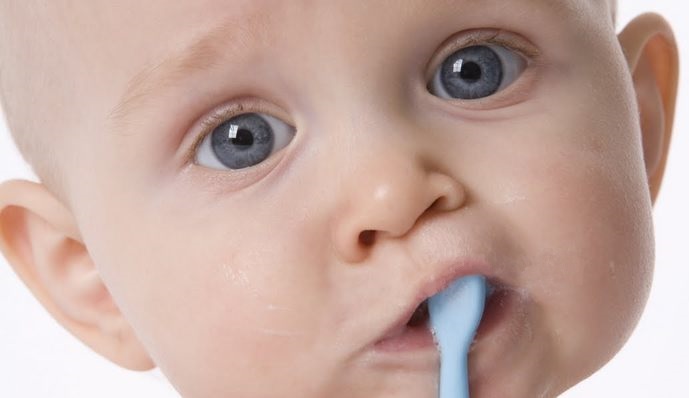 A Toddler Speaks…
A Toddler Speaks…
Okay, let’s just get right to the point. I don’t like having my teeth brushed. In fact, I don’t think it’s overstating it to say that I flat-out despise having my teeth brushed. And I’ve got good, solid reasoning on my side.
Let’s look at the facts, shall we?
- Teething hurts, and I’ve always got either a tooth burrowing its way painfully through my gums to the surface or a newly-emerged tooth still partially embedded in inflamed gums or a tooth that’s just fully come in and is surrounded by irritated gums. Can you say, “Ouch!!!”
- I have very little control over the outside of my body. People (You know who you are!) are always picking me up without warning and putting me places I didn’t ask to go and wiping my face off without asking (Those wash cloths totally cover my mouth and nose, btw. Suffocation = not cool.) and putting clothes on me without even asking my opinion (Yes, I do have an opinion, and it is a valid one even if I can’t articulate why those purple pants bother me or why the brown shoes feel better than the blue ones.) and the list goes on. So losing control of the inside of my body is a really, really big deal!
- Ever heard of a gag reflex? If not, you should Google that. It’s real.
- Seriously, would you like someone getting all up in your face with a stick and shoving it in your mouth? (Btw, you might want to consider brushing your teeth before trying to brush mine. Or at least use a breath mint.)
Okay, so now that we’ve considered the facts, let’s take a look at a few suggestions to make toothbrushing a happier experience for all of us (Mainly me, of course.):
- I like choices, so how about offering some? You can let me choose between two brushes or two toothpastes or whether I want to brush before or after my bath. I may still be a bit resistant, but I’ll feel a little more in control of what happens to me.
- Speaking of choices, there are tons of toothbrushes out there, and some even have handles so I won’t feel like it can go down my throat and some have soft bristles all the way around the top so I can chew on it and get a lot of brushing out of the way painlessly. Who knows, it might even feel good on these aching gums!
- This should go without saying, but seriously, remember the sore gums, gag reflex, etc. Be aware. Be careful. Be gentle!
- Again, this should be obvious, but I am a real, live, thinking person with real, valid feelings, so how about asking if I’m ready to have my teeth brushed? And if I’m not ready, how about respecting that and modeling a bit of that patience you want me to learn (At least, I’m guessing that’s what you want me to learn since every time I ask you to play with me or get me something you say, “Just a minute, honey.” Just saying.) and waiting a few minutes. We could read a book or sing a song or something to get me in the toothbrushing mood.
- And speaking of modeling, go ahead and brush your teeth first while I hang out on your hip and watch. Seeing that it doesn’t hurt you and that everyone has to brush their teeth is very reassuring. Better yet, let me have a crack at brushing your teeth before you brush mine. Turn-about is fair play, right?
- I really do need to feel like I have some control over my body (Foundation for potty transitioning and all that sort of thing, you know.) so how about letting me brush my own teeth first and then you just finishing the job up and getting in all the hard places?
- Silliness is my language, so definitely get your funny-bone in action. Try calling toothbrushing more palatable names like ‘tickling the ivories’ or ‘tackling the tooth monsters’ or ‘tickle teeth time.’ I may or may not go along with your goof-ball approach, but I’ll appreciate the effort.
- Get your groove on and start singing your way to sparkling teeth. You can make up toothbrushing words to the ‘A,B,C Song’ or ‘If You’re Happy and You Know It’ or whatever song you like. Something like “This is the way we brush our monkeys…no, that’s not right…This is the way we brush our toes…” combines silliness with singing. Win-win! By the time you’re done messing up the song my teeth are all brushed, and I’m giggling so hard I don’t even realize it!
Well, that about covers it. Give it some thought, will you? Your toddlers will thank you!
~~~~~~~~~~~~~~
Remember, parents, gentle approaches to childhood issues won’t necessarily ‘work’ to eliminate normal behaviors, and resisting toothbrushing is a totally normal behavior, unfortunately. Gentle parenting is about working with your child through normal behaviors as kindly and respectfully as possible. They may still resist, but they will get that you aren’t just forcing things on them. Over time, your gentle and respectful approach will bear fruit, though, in a healthy, connected relationship.
Related posts:
The Taming of the Tantrum: A Toddler’s Perspective
Practical, Gentle, Effective Discipline
10 Ways to Play with your Children when Play is the Last Thing on your Mind
200 Ways to Bless Your Children with a Happy Childhood
Playground Confessions~Look Who’s Talking!
When Children Hit~10 Tips for Parents
Testing the Boundaries~What’s a Parent to Do?
Toddlers, Tantrums, and Time-Ins, Oh My!
Easy Peasy DIY Parenting Tools
 Award-winnning author, L.R.Knost, is the founder and director of the children's rights advocacy and family consulting group, Little Hearts/Gentle Parenting Resources, and Editor-in-Chief of Holistic Parenting Magazine. Books by L.R.Knost include Whispers Through Time: Communication Through the Ages and Stages of Childhood ; Two Thousand Kisses a Day: Gentle Parenting Through the Ages and Stages ; The Gentle Parent: Positive, Practical, Effective Discipline ; and Jesus, the Gentle Parent: Gentle Christian Parenting the first four books in the Little Hearts Handbook gentle parenting series, and children’s picture books Petey’s Listening Ears and the soon-to-be-released Grumpykins series.
Award-winnning author, L.R.Knost, is the founder and director of the children's rights advocacy and family consulting group, Little Hearts/Gentle Parenting Resources, and Editor-in-Chief of Holistic Parenting Magazine. Books by L.R.Knost include Whispers Through Time: Communication Through the Ages and Stages of Childhood ; Two Thousand Kisses a Day: Gentle Parenting Through the Ages and Stages ; The Gentle Parent: Positive, Practical, Effective Discipline ; and Jesus, the Gentle Parent: Gentle Christian Parenting the first four books in the Little Hearts Handbook gentle parenting series, and children’s picture books Petey’s Listening Ears and the soon-to-be-released Grumpykins series.
The ‘NO’ Zone
[Portions reprinted from Whispers Through Time: Communication Through the Ages and Stages of Childhood by L.R.Knost. Two Thousand Kisses a Day: Gentle Parenting Through the Ages and Stages and The Gentle Parent: Positive, Practical, Effective Discipline also available on Amazon and through other major retailers.]
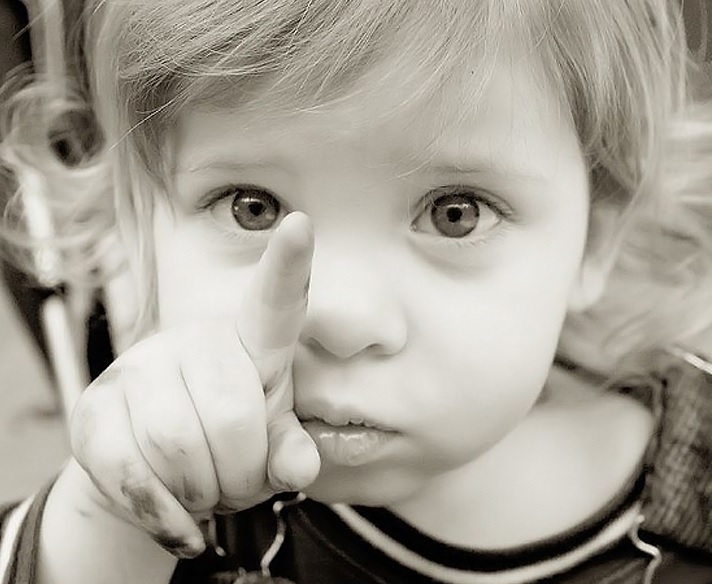 The life of a small child is comprised of a daily onslaught of tempting surfaces begging for the artistry of a crayon, tall places crying out to be scaled, lovely little objects in need of a mouth or nose to visit, and dozens of other alluring glass and liquid and sharp things to be explored through the physics of gravity, the kinetics of concoctions, and the application of Newton’s Laws of Motion. There is only one force powerful enough to defeat this nearly irresistible call of adventure, imagination, and discovery…the No!
The life of a small child is comprised of a daily onslaught of tempting surfaces begging for the artistry of a crayon, tall places crying out to be scaled, lovely little objects in need of a mouth or nose to visit, and dozens of other alluring glass and liquid and sharp things to be explored through the physics of gravity, the kinetics of concoctions, and the application of Newton’s Laws of Motion. There is only one force powerful enough to defeat this nearly irresistible call of adventure, imagination, and discovery…the No!
Every child knows the power of the No to circumvent the most well-laid plans. Even tiny babies just weeks into the world are introduced to its power when they grasp a fistful of hair while nursing or reach for some lovely, squishy stuff while getting a diaper change. That itty bitty two-letter word is packed with a force beyond comprehension to a toddler, and when they finally figure out how to wrap their little lips around those letters and form the word “NO!” themselves, the possibilities seem limitless!
Do you want a cookie? “No!”…Well, actually, yes, but how cool is it that when I said “No!” I controlled whether or not someone gave me a cookie!
Do you want Daddy to hold you? “No!” Well, yes, but I got to decide whether someone held me or not for a change!
Do you want to play outside? “No!” Actually, I do, but do I really get to decide for myself where I go? Cool!
That kind of power and control can go to a little person’s head, for sure! And the change in the big people when the word is used against them clearly demonstrates its incredible value. Their faces go from happy to serious or even angry, and sometimes a little person can even make a big person yell. What dazzling power!
And then when little ones manage a few more words in their vocabulary, they can add direct quotes from the most powerful beings they know ~ mommy and daddy. Quotes like, “I said ‘No’!” and “Don’t you tell me ‘No’!” and “No means ‘No’!”
The authority! The dominion! The clout! And using them against those powerful beings, watching them turn red in the face and yell and threaten…well, it’s a little scary and makes a small person feel really disconnected and upset…but the surge of intense pleasure at feeling powerful and in control almost makes them feel like a big person for a moment!
And that’s what they most long to be, just like mommy and daddy ~ big and strong and smart and powerful.
So what’s a mommy or daddy to do when confronted with the No from their little power-mongers? First, take a deep breath, and then engage those adult brains.
What inherent power is there, really, in a little two-letter word? Only the power we give it! What if, instead of that tiny word being able to push our buttons, we just disconnected the buttons entirely and didn’t react to the No at all? It would simply become a no, just another word to celebrate our precious little people adding to their fledgling vocabularies.
What if we backed up even further and disenfranchised the No from the beginning? When our newborn baby’s flailing hands caught a tiny fistful of hair, what if we just smiled and gently removed it and kissed those itty bitty little fingers?
When our intrepid little explorers discovered the wonders of kitchen cabinets, what if we used cabinet locks but left one or two full of pots and pans and plastic bins for them to discover?
What if when our little people headed for the walls to do their best Michelangelo interpretation on them, we simply intercepted them and offered alternative canvases?
Or what if when they ascended the kitchen cabinets, we just scooped them up and headed outdoors for some climbing adventures?
The thing is, the No is only the No when we, the adults, make it the No. And it can become simply a no when we get creative and interactive and stop using a tiny two-letter word like it has “Phenomenal Cosmic Power in an itty-bitty living space!” (Aladdin 1994)
Related posts:
When Children Act Out ~ Reflecting Our Emotions
7-Year-Old Gentle Parenting Crusader
Changing the World, One Little Heart at a Time
Practical, Gentle, Effective Discipline
 Award-winnning author, L.R.Knost, is the founder and director of the children's rights advocacy and family consulting group, Little Hearts/Gentle Parenting Resources, and Editor-in-Chief of Holistic Parenting Magazine. Books by L.R.Knost include Whispers Through Time: Communication Through the Ages and Stages of Childhood ; Two Thousand Kisses a Day: Gentle Parenting Through the Ages and Stages ; The Gentle Parent: Positive, Practical, Effective Discipline ; and Jesus, the Gentle Parent: Gentle Christian Parenting the first four books in the Little Hearts Handbook gentle parenting series, and children’s picture books Petey’s Listening Ears and the soon-to-be-released Grumpykins series.
Award-winnning author, L.R.Knost, is the founder and director of the children's rights advocacy and family consulting group, Little Hearts/Gentle Parenting Resources, and Editor-in-Chief of Holistic Parenting Magazine. Books by L.R.Knost include Whispers Through Time: Communication Through the Ages and Stages of Childhood ; Two Thousand Kisses a Day: Gentle Parenting Through the Ages and Stages ; The Gentle Parent: Positive, Practical, Effective Discipline ; and Jesus, the Gentle Parent: Gentle Christian Parenting the first four books in the Little Hearts Handbook gentle parenting series, and children’s picture books Petey’s Listening Ears and the soon-to-be-released Grumpykins series.
A Toddler’s 12 Days of Christmas
O n the first day of Christmas, my toddler gave to me
n the first day of Christmas, my toddler gave to me
A necklace of macaroni.
On the second day of Christmas, my toddler gave to me
2 peek-a-boos and a necklace of macaroni.
On the third day of Christmas, my toddler gave to me
3 bear hugs, 2 peek-a-boos, and a necklace of macaroni.
On the fourth day of Christmas, my toddler gave to me
4 ‘pwitty’ weeds, 3 bear hugs, 2 peek-a-boos, and a necklace of macaroni.
On the fifth day of Christmas, my toddler gave to me
5 belly laughs…
4 ‘pwitty’ weeds, 3 bear hugs, 2 peek-a-boos, and a necklace of macaroni.
On the sixth day of Christmas, my toddler gave to me
6 scribbled pictures,
5 belly laughs…
4 ‘pwitty’ weeds, 3 bear hugs, 2 peek-a-boos, and a necklace of macaroni.
On the seventh day of Christmas, my toddler gave to me
7 sticky kisses, 6 happy giggles,
5 belly laughs…
4 ‘pwitty’ weeds, 3 bear hugs, 2 peek-a-boos, and a necklace of macaroni.
On the eighth day of Christmas, my toddler gave to me
8 books at bedtime, 7 sticky kisses, 6 happy giggles,
5 belly laughs…
4 ‘pwitty’ weeds, 3 bear hugs, 2 peek-a-boos, and a necklace of macaroni.
On the ninth day of Christmas, my toddler gave to me
9 silly dances, 8 books at bedtime, 7 sticky kisses, 6 happy giggles,
5 belly laughs…
4 ‘pwitty’ weeds, 3 bear hugs, 2 peek-a-boos, and a necklace of macaroni.
On the tenth day of Christmas, my toddler gave to me
10 thumbprint snowmen, 9 silly dances, 8 books at bedtime, 7 sticky kisses, 6 happy giggles,
5 belly laughs…
4 ‘pwitty’ weeds, 3 bear hugs, 2 peek-a-boos, and a necklace of macaroni.
On the eleventh day of Christmas, my toddler gave to me
11 happy giggles, 10 thumbprint snowmen, 9 silly dances, 8 books at bedtime, 7 sticky kisses, 6 happy giggles,
5 belly laughs…
4 ‘pwitty’ weeds, 3 bear hugs, 2 peek-a-boos, and a necklace of macaroni.
On the twelfth day of Christmas, my toddler gave to me
12 excited squeals, 11 happy giggles, 10 thumbprint snowmen, 9 silly dances, 8 books at bedtime, 7 sticky kisses, 6 happy giggles,
5 belly laughs…
4 ‘pwitty’ weeds, 3 bear hugs, 2 peek-a-boos, and a necklace of macaroni.
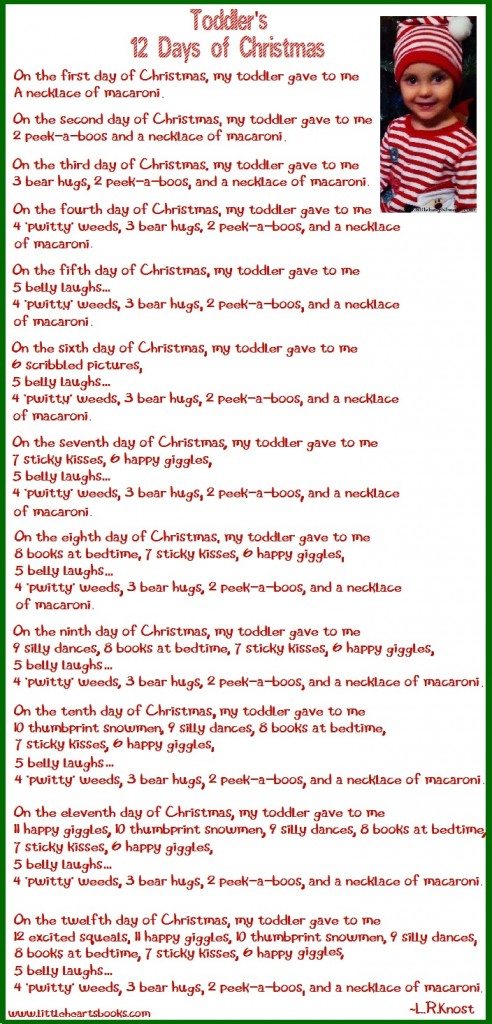 Related posts:
Related posts:
The Spirit of Christmas… The Great Santa Claus Debate
The Reason for the Season… Celebrating Jesus with a Santa Claus Christmas
In a twist on the Advent theme, here is A Very Toddler Christmas~24 Tips for a Safe, Stress-Free & Jolly Holiday
Some of my all-time favorite book-related and crafty ideas for a fun and meaningful Advent… Bookish & Craftastic Advent Ideas
Making gratitude and generosity a standard of life… 7 Tips and Traditions to Make Giving a Standard of Living
A happy childhood sends a child into adulthood with a baggage of confidence and kindness instead of disillusionment and anger. 200 Ways to Bless Your Children with a Happy Childhood
The human brain needs time to process, categorize, prioritize, analyze, and otherwise make sense of all of the trillions of bits of information that it receives each day. Non-structured playtime for children functions much like sleep does for adults, giving their brains the time and space they need to move short-term memory to long-term learning. 25 Reasons NOT to Keep Children Busy
In the world of a child wonders are as simple as sticks and sheets, leaves and books, boxes and giggles, and the promise in a rainy day. The Seven Wonders of the World of Childhood
Children who love to read…READ! Engaging children’s hearts in the wonder of reading instead of just training their minds in its mechanics. Raising Bookworms
From hitting to defiance to tantrums to testing the boundaries and more, here are gentle parenting tools, tips, and techniques…Practical Gentle Discipline
Get the scoop on tantrums from a toddler…The Taming of the Tantrum~A Toddler’s Perspective
Sharing a love of reading…If You Give A Toddler A Book…
 Award-winnning author, L.R.Knost, is the founder and director of the children's rights advocacy and family consulting group, Little Hearts/Gentle Parenting Resources, and Editor-in-Chief of Holistic Parenting Magazine. Books by L.R.Knost include Whispers Through Time: Communication Through the Ages and Stages of Childhood ; Two Thousand Kisses a Day: Gentle Parenting Through the Ages and Stages ; The Gentle Parent: Positive, Practical, Effective Discipline ; and Jesus, the Gentle Parent: Gentle Christian Parenting the first four books in the Little Hearts Handbook gentle parenting series, and children’s picture books Petey’s Listening Ears and the soon-to-be-released Grumpykins series.
Award-winnning author, L.R.Knost, is the founder and director of the children's rights advocacy and family consulting group, Little Hearts/Gentle Parenting Resources, and Editor-in-Chief of Holistic Parenting Magazine. Books by L.R.Knost include Whispers Through Time: Communication Through the Ages and Stages of Childhood ; Two Thousand Kisses a Day: Gentle Parenting Through the Ages and Stages ; The Gentle Parent: Positive, Practical, Effective Discipline ; and Jesus, the Gentle Parent: Gentle Christian Parenting the first four books in the Little Hearts Handbook gentle parenting series, and children’s picture books Petey’s Listening Ears and the soon-to-be-released Grumpykins series.
A Very Toddler Christmas~24 Tips for a Safe, Stress-Free & Jolly Holiday
[By L.R.Knost, best-selling author of The Gentle Parent: Positive, Practical, Effective Discipline; Whispers Through Time: Communication Through the Ages and Stages of Childhood; Two Thousand Kisses a Day: Gentle Parenting Through the Ages and Stages; and Jesus, the Gentle Parent: Gentle Christian Parenting available on Amazon and through other major retailers.]
*********************
 What do you get when you cross a curious toddler with a Christmas tree covered with glittering, dangling ‘toys’ and enticing, shiny lights? At the very least, a season of toddler chasing and redirecting, and at the worst a season of shattered-glass hazards and tree-scaling, toppling nightmares. So what’s a parent to do? Must we scrap the tree so we can have a merry Christmas while we have little ones in the house? Not at all!
What do you get when you cross a curious toddler with a Christmas tree covered with glittering, dangling ‘toys’ and enticing, shiny lights? At the very least, a season of toddler chasing and redirecting, and at the worst a season of shattered-glass hazards and tree-scaling, toppling nightmares. So what’s a parent to do? Must we scrap the tree so we can have a merry Christmas while we have little ones in the house? Not at all!
Here is an Advent list with a twist…24 Christmas safety tips for parents with tiny people who love to explore:
 1.) A Christmas tree plopped down right in the middle of a child’s playspace (i.e. family room, living room, den) is just too much temptation for any little person, so one solution is to place the tree in a lesser-used room such as a study or office or even a covered porch where the tree can be seen but is less accessible to little explorers.
1.) A Christmas tree plopped down right in the middle of a child’s playspace (i.e. family room, living room, den) is just too much temptation for any little person, so one solution is to place the tree in a lesser-used room such as a study or office or even a covered porch where the tree can be seen but is less accessible to little explorers.
2.) Another option is to place the Christmas tree in a play yard like the one pictured to keep the tree safe while still having it in a central location in the house for everyone to enjoy.
3.) A tabletop tree is also an option. Keep the tree away from the edges and watch out for dangling tree skirts and light cords so little hands can’t pull the tree down on top of little heads.
4.) For families like ours who have lots of little ones toddling around year after year, a child-proof tree may be the answer. We used fishline to anchor our tree to the ceiling after one tiny climber toppled the tree over on herself a few times. Non-breakable ornaments (homemade ornaments are great  alternatives) tied to the tree with ribbons instead of metal hooks (choking hazard!) are the solution to our current little spelunker who loves to crawl under the Christmas tree and lay looking up at the sparkling lights from her little hidey-hole.
alternatives) tied to the tree with ribbons instead of metal hooks (choking hazard!) are the solution to our current little spelunker who loves to crawl under the Christmas tree and lay looking up at the sparkling lights from her little hidey-hole.
5.) Be sure to check that your artificial tree is fire-rated or your real tree is fresh (i.e. easily bendable branches, no dropping needles) and keep your real tree well-watered to reduce fire danger.
6.) Always check lights for broken, loose, or missing bulbs, and make sure wires aren’t frayed and sockets aren’t cracked. Turn lights off when leaving your home or going to bed.
7.) For outdoor lighting/decorating, be sure to use extension cords rated for outdoor use, and don’t overload the outlet by stringing together more lights than the instructions allow. Elevate cords to avoid them sitting in water or on dry leaves. Have lights on a timer or turn lights out when leaving your home or going to bed.
8.) When decorating, place figurines and keepsakes out of reach of little hands to avoid constantly chasing giggling toddlers who find your reaction to their snatch-and-run game a great source of holiday entertainment.
9.) Avoid decorating with real holly or mistletoe in areas accessible to small children, as both are toxic if eaten.
10.) Never decorate your tree with candles, and keep candles separated from pine branches on tabletops and mantles by placing them in deep glass votives. Never leave a small child alone in a room with a burning candle.
11.) Keep snow sprays out of reach as they can be toxic if inhaled and can cause injury if sprayed into eyes.
12.) When entertaining, keep hot plates away from the edges of tables and remind guests not to leave hot or alcoholic beverages within reach of small children.
13.) House guests may not be used to having small children around, so be extra vigilant about medicine bottles, unattended purses, open luggage, and other dangers that may visit along with your guests.
14.) When purchasing gifts, check labels for age recommendations. Keep in mind that even if you think a little one is advanced enough to enjoy a toy that is recommended for an older child, the toy may contain choking hazards or other dangers to a small child.
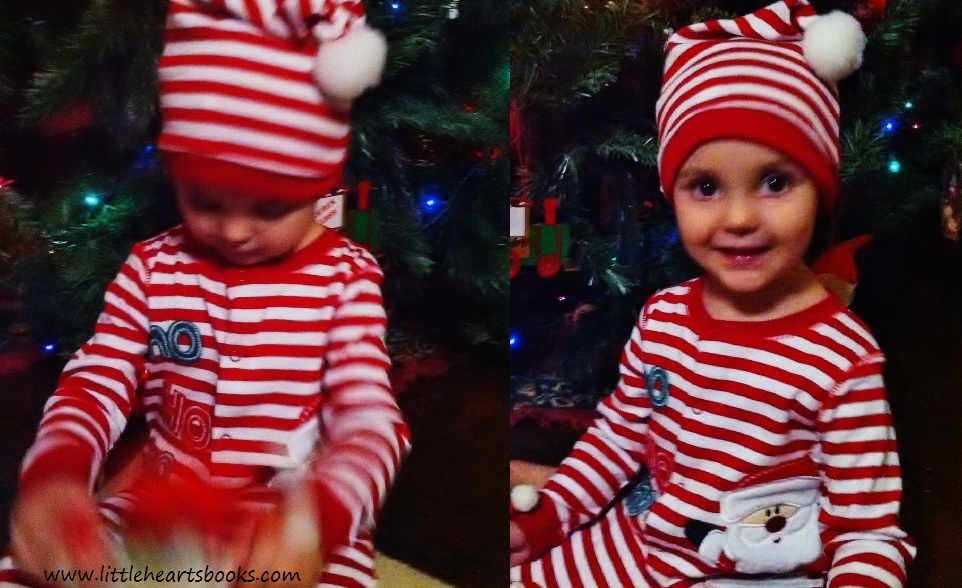 15.) Unless you like wrapping presents over and over and…well, you get the picture, avoid setting wrapped packages out under the tree if the tree is accessible to small children. Keeping your expectations in line with your child’s developmental stage is a key element to avoiding conflict in your parent/child relationship and making your holidays less stressful and more enjoyable!
15.) Unless you like wrapping presents over and over and…well, you get the picture, avoid setting wrapped packages out under the tree if the tree is accessible to small children. Keeping your expectations in line with your child’s developmental stage is a key element to avoiding conflict in your parent/child relationship and making your holidays less stressful and more enjoyable!
16.) In the flurry of gift opening on Christmas morning, small objects from ripped open packages (like the 42 little plastic tabs to hold a $5 rattle in a cardboard box!) can end up scattered amongst the toys and boxes and paper, creating a sea of choking hazards. Keep a big box handy to throw packaging and wrapping paper into, and choose one or two toys to remove from their packaging for immediate play while putting the other opened presents away in another box to be opened later.
17.) Never let children throw wrapping paper into the fireplace, as this can cause a dangerous flash fire.
18.) Keep a close watch on your little one’s diet throughout the holidays. In the busyness of the season, nutrition often takes a backseat to convenience, and an overload of junk foods and sweets can cause tummy aches and crankiness which won’t help them or you to have a jolly holiday.
19.) Another nutritional danger of the season is unintentional weaning. If you’re nursing a little one, the constant changes in schedule, the busyness, the stress, and the baby being passed from one relative to another can result in missed feedings and reduced milk supply. Making a conscious effort to take regular nursing breaks in a quiet room with your little nursling will give both of you a chance to reconnect and de-stress a bit and keep your nursing relationship intact.
20.) Also, be very aware of your little one’s sleep patterns during the holiday season. All of the disturbances mentioned in #19 can wreak havoc on a small child’s sleep schedule and, along with the almost inevitable over-stimulation of the music, lights, and visitors, that can make the holidays a miserable time for a little person.
21.) Fireplaces should be regularly inspected to prevent chimney fires, and protective fire-screens and/or baby gates should be used to keep little ones safe.
22.) Space heaters are a well-known fire hazard. Make sure you are using them according to the manufacturer’s specifications and that they are in good working order. Never leave a small child unattended in a room with a space heater.
23.) Keep in mind that, while you know and love those visiting relatives your little one has never met, expecting a small child to instantly let a person who is a total stranger to them hold and kiss and play with them is unrealistic. If we want our children to exercise restraint and caution with random strangers at the  park/mall/etc., we need to allow them to set limits they are comfortable with when it comes to physical contact and interaction with the ‘strangers’ in our homes, as well.
park/mall/etc., we need to allow them to set limits they are comfortable with when it comes to physical contact and interaction with the ‘strangers’ in our homes, as well.
24.) And, last but certainly not least, while pictures of their little ones with Santa may be every parent’s heart’s desire, small children often don’t share that desire. Instead of forcing your child to sit in a strange man’s lap (not exactly a precedent we want to set for our children!), if your child isn’t comfortable with the idea, get creative and try getting pictures of your toddler standing near Santa while he plays peek-a-boo with them or try kneeling on one knee next to Santa, yourself, with your little one on your other knee. You never know, those pictures may end up being your all-time favorites!
~~~~~~~~~~~~~~
More ideas about how to make the holiday season fun-filled and meaningful, as well as keeping the joy and wonder of childhood alive for your little ones year round:
The Spirit of Christmas… The Great Santa Claus Debate
Making gratitude and generosity a standard of life… 7 Tips and Traditions to Make Giving a Standard of Living
The Reason for the Season… Celebrating Jesus with a Santa Claus Christmas
A happy childhood sends a child into adulthood with a baggage of confidence and kindness instead of disillusionment and anger. 200 Ways to Bless Your Children with a Happy Childhood
The human brain needs time to process, categorize, prioritize, analyze, and otherwise make sense of all of the trillions of bits of information that it receives each day. Non-structured playtime for children functions much like sleep does for adults, giving their brains the time and space they need to move short-term memory to long-term learning. 25 Reasons NOT to Keep Children Busy
In the world of a child wonders are as simple as sticks and sheets, leaves and books, boxes and giggles, and the promise in a rainy day. The Seven Wonders of the World of Childhood
Children who love to read…READ! Engaging children’s hearts in the wonder of reading instead of just training their minds in its mechanics. Raising Bookworms
From hitting to defiance to tantrums to testing the boundaries and more, here are gentle parenting tools, tips, and techniques. Practical, Gentle, Effective Discipline
 Award-winnning author, L.R.Knost, is the founder and director of the children's rights advocacy and family consulting group, Little Hearts/Gentle Parenting Resources, and Editor-in-Chief of Holistic Parenting Magazine. Books by L.R.Knost include Whispers Through Time: Communication Through the Ages and Stages of Childhood ; Two Thousand Kisses a Day: Gentle Parenting Through the Ages and Stages ; The Gentle Parent: Positive, Practical, Effective Discipline ; and Jesus, the Gentle Parent: Gentle Christian Parenting the first four books in the Little Hearts Handbook gentle parenting series, and children’s picture books Petey’s Listening Ears and the soon-to-be-released Grumpykins series.
Award-winnning author, L.R.Knost, is the founder and director of the children's rights advocacy and family consulting group, Little Hearts/Gentle Parenting Resources, and Editor-in-Chief of Holistic Parenting Magazine. Books by L.R.Knost include Whispers Through Time: Communication Through the Ages and Stages of Childhood ; Two Thousand Kisses a Day: Gentle Parenting Through the Ages and Stages ; The Gentle Parent: Positive, Practical, Effective Discipline ; and Jesus, the Gentle Parent: Gentle Christian Parenting the first four books in the Little Hearts Handbook gentle parenting series, and children’s picture books Petey’s Listening Ears and the soon-to-be-released Grumpykins series.
The Taming of the Tantrum: A Toddler’s Perspective
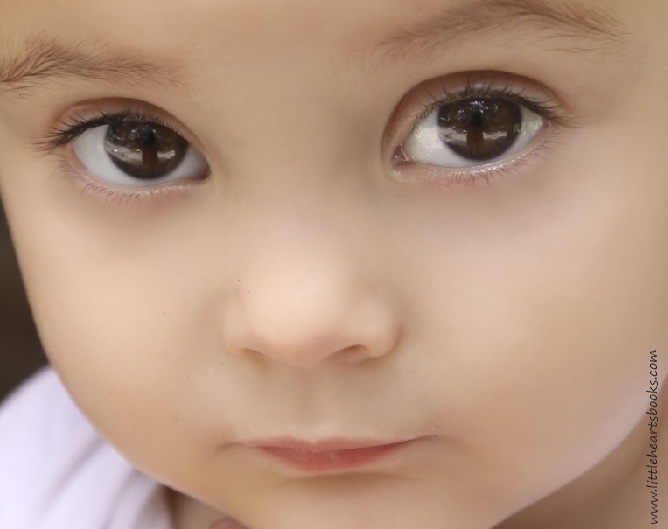 [From Whispers Through Time: Communication Through the Ages and Stages of Childhood by L.R.Knost. Two Thousand Kisses a Day: Gentle Parenting Through the Ages and Stages and The Gentle Parent: Positive, Practical, Effective Discipline also available on Amazon and through other major retailers.]
[From Whispers Through Time: Communication Through the Ages and Stages of Childhood by L.R.Knost. Two Thousand Kisses a Day: Gentle Parenting Through the Ages and Stages and The Gentle Parent: Positive, Practical, Effective Discipline also available on Amazon and through other major retailers.]
So parents, here’s the scoop on tantrums:
They’re your fault.
Okay, okay, so maybe my toddlerhood contributes to them a teensy-weensy bit, but seriously…
You with the obsession with brushing teeth and bedtimes and matching clothes, enough already! Does it ever even occur to you that there’s another person (Yes, I am an actual separate person from you. Remember that whole cutting of the umbilical cord thing?) who might have an opinion about what goes in my mouth or when I’m tired or not or what I want to wear?
And you, the one who thinks carrots and kale are food. Really? You have all kinds of opinions about what tastes good and what doesn’t, but I’m not allowed to have any?
And don’t even get me started on the rush-rush, hurry-up craziness that has me being snatched up in the middle of my most fantastic block tower ever and strapped into a torture device (Btw, where’s your carseat?!?) and dragged from one place to another right through snack time. I can’t have an agenda? Don’t my interests mean anything?
Okay, so maybe I don’t know everything yet, but how am I going to learn if you just force these issues instead of communicating with me about things? That whole learning by osmosis thing (a.k.a. passive learning) didn’t work for you in college, and it won’t work with me, either.
You keep going on and on and ooooon about wanting me to listen. “Why won’t you listen?” “If you’d listen for once!” “Would you just listen to me?!?” I’ve got three words for you…
Two. Way. Street.
Maybe instead of that whole failed learning by osmosis experiment you keep trying (You do know the definition of insanity is doing the same thing over and over again expecting a different result, right? Okay, okay, just checking!) you could read the research and find out that I learn by active engagement (two-way conversation!) and imitation. Yep, that’s right. I learn from what you do, not just what you say.
So here’s the deal…
Want me to learn to listen? Then listen to me. Listen and respond to my cries when I’m a baby. Listen and reply to my babbling attempts at talking when I’m a toddler. Listen to my whining and respond patiently when I’m a preschooler. (I know it’s annoying, but whining is my last step, kind of like your ‘last nerve’ you complain I’m stomping on, before I have a meltdown. It’s my last-ditch effort to hold on to the tiny bit of self-control I’ve learned so far in my short life!) Listen and actually pay attention (a.k.a eye contact!) to my endless stories about snails when I’m in middle childhood and to my endless complaints and dramas when I’m in my teen years.
Want me to learn respect? Then show me respect. Show me that you respect my personal space by explaining the things you’re doing to me like changing my diaper or strapping me into a carseat. Show me that you respect others by not talking about them behind their backs (Yes, I can and do hear you!) or yelling at them on the road. Show me that you respect my opinions by asking for them and accommodating them when you can. (I know you won’t always be able to, but the times you do will help me to accept the times you can’t.)
Want me to learn compassion? Then show me compassion. Respond kindly and gently when I’m upset or angry or just out-of-sorts. Stay close when my emotions overwhelm me and I have a meltdown moment. (I need your presence and compassion the most when I seem to deserve it or even want it the least!) And model compassion by treating others kindly in front of me.
Want me to learn self-control? (This is a big one!) Then show me self-control. Take a parental time-out when you get tired or overwhelmed or angry so I learn how to handle those big emotions. Count to ten and take some deep breaths instead of yelling or hitting. And pace yourself in this big world. I need to learn that it’s okay to take care of myself and not feel like I have to fill every moment with plans and schedules and agendas. I’ll learn that from watching you choose wisely from the many opportunities and pressures life will offer.
Okay, so to wrap this up. My tantrums don’t just come out of nowhere. They are the result of tiredness, hunger, frustration, anger, etc. You can prevent them, or at least minimize them, by keeping me fed and rested, by paying attention to my preferences, interests, and attempts to communicate, and by communicating kindly and patiently with me about upcoming changes or things I might not like. And keep in mind, I’m always watching and absorbing everything that goes on around me, so make sure you’re living what you want me to learn!
Related posts:
Practical, Gentle, Effective Discipline
When Things Get Physical: Hitting, Throwing, Kicking, and Biting
Testing the Boundaries~What’s a Parent to Do?
Toddlers, Tantrums, and Time-In’s, Oh My!
Parenting a Strong-Willed Child
Spare the Rod: The Heart of the Matter
Easy Peasy DIY Parenting Tools
To a Toddler Sharing is a 4 Letter Word~MINE!
 Award-winnning author, L.R.Knost, is the founder and director of the children's rights advocacy and family consulting group, Little Hearts/Gentle Parenting Resources, and Editor-in-Chief of Holistic Parenting Magazine. Books by L.R.Knost include Whispers Through Time: Communication Through the Ages and Stages of Childhood ; Two Thousand Kisses a Day: Gentle Parenting Through the Ages and Stages ; The Gentle Parent: Positive, Practical, Effective Discipline ; and Jesus, the Gentle Parent: Gentle Christian Parenting the first four books in the Little Hearts Handbook gentle parenting series, and children’s picture books Petey’s Listening Ears and the soon-to-be-released Grumpykins series.
Award-winnning author, L.R.Knost, is the founder and director of the children's rights advocacy and family consulting group, Little Hearts/Gentle Parenting Resources, and Editor-in-Chief of Holistic Parenting Magazine. Books by L.R.Knost include Whispers Through Time: Communication Through the Ages and Stages of Childhood ; Two Thousand Kisses a Day: Gentle Parenting Through the Ages and Stages ; The Gentle Parent: Positive, Practical, Effective Discipline ; and Jesus, the Gentle Parent: Gentle Christian Parenting the first four books in the Little Hearts Handbook gentle parenting series, and children’s picture books Petey’s Listening Ears and the soon-to-be-released Grumpykins series.
12 Tips for Gently Parenting Your Adult Children (Hint: It starts when they’re newborns)
[Portions reprinted from Two Thousand Kisses a Day: Gentle Parenting Through the Ages and Stages by L.R.Knost. Whispers Through Time: Communication Through the Ages and Stages of Childhood; The Gentle Parent: Positive, Practical, Effective Discipline; and Jesus, the Gentle Parent: Gentle Christian Parenting also available on Amazon and through other major retailers.]
~~~~~~~~~~~~~~~~~~~~~
“Life is a succession of lessons which must be lived to be understood.” ~Ralph Waldo Emerson
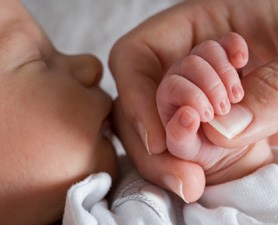 All stages of parenting come with their own unique learning curve, their own challenges and frustrations, their own compromises and sacrifices, and their own flubs, false steps, and failures. From those first terror-stricken days with a newborn to the sleep-deprived months of infancy to the challenges of toddlerhood and beyond, parenting is a journey, not a destination. And when subsequent little ones arrive, the journey starts all over again as we discover that the lessons learned from parenting one child don’t always apply to the next as each have their own incomparable personalities, quirks, and individual identities.
All stages of parenting come with their own unique learning curve, their own challenges and frustrations, their own compromises and sacrifices, and their own flubs, false steps, and failures. From those first terror-stricken days with a newborn to the sleep-deprived months of infancy to the challenges of toddlerhood and beyond, parenting is a journey, not a destination. And when subsequent little ones arrive, the journey starts all over again as we discover that the lessons learned from parenting one child don’t always apply to the next as each have their own incomparable personalities, quirks, and individual identities.
The principles of gentle parenting (connection, empathy, respect, etc.) don’t change as our children grow, just as they don’t change from one child to the next. What does change is our understanding of those principles as we grow in wisdom and experience as parents and as human beings. The practical application of gentle parenting principles, though, can look very different from child to child and life stage to life stage. For instance, with an introverted child gentle parenting might involve a greater degree of physical proximity and emotional support whereas with a very extroverted child it may involve a greater degree of energy direction and respectful guidance.
This constancy of principles and individualized application of gentle parenting is no less true when parenting our adult children than it is when parenting our minor children. As gentle parents, we are our children’s first and best friend in the purest and truest definition of friendship. That sets the stage for the transition from the early parent/friend years to the parent-friendship that will characterize our relationship when our children grow into adulthood.
Here are 12 practical tips for gently parenting your adult children:
1.) Begin to consciously pay attention to your own parents’ interactions with you. Mentally catalog what you find helpful and what you find intrusive, what is an acceptable level of involvement, advice, and interaction and what feels overbearing or lacking. Make a mental note (or make actual notes if you’re a list person like me) to remember those feelings when your own children become adults.
2.) Remember, parenting is literally ‘on the job’ learning. Your parents are discovering by trial and error (often lots of error) what their roles and boundaries are in this uncharted territory of parenting adults. Model giving your parents grace when they overstep or underplay their roles. This will set the stage for your children to extend the same grace to you when seemingly overnight you suddenly find yourself learning to parent your own adult children.
3.) While your child is an infant, meet their needs swiftly, consistently, and gently. They won’t remember what you did or didn’t do at this stage, but they will always carry with them the safety, security, and love that they feel in your responsiveness, and that is they will take with them into adulthood.
4.) When your child reaches toddlerhood, focus on connection rather than correction. What will matter most in later years won’t be whether they wore matching shoes or left the park without pitching a fit. What will matter is whether they felt heard, understood, and respected.
5.) As your child moves into the preschool and early childhood years, focus on communication, whether that takes the form of whining, tattling, endless questions or some combination of all three. Continue to build a trust relationship by hearing their heart rather than their tone and responding with gentle guidance.
6.) When your child reaches the middle stages of childhood, listening to the endless stories from your chatterbox or offering empathy and quiet support to your dreamer will help them as they explore who they are and who they want to be when they grow up. You are building the friendship of a lifetime in these interactions, so make them a priority.
7.) Once your child enters the teen years, consciously begin to gradually shift your role into a supporting rather than a leading act. Listen not to their words, their attitudes, their hormones, their angst. Listen instead to their struggles, their hopes, their dreams, their fears. Remember, you are the only adult in the relationship at this point. They still have a lot of maturing to do. Practice self-control. Be honest about your own struggles, fears, and failings. You’ll be amazed at what a connection point that is as your teen discovers that they aren’t alone in their humanness. Be the first one to listen, the first one to forgive, the first one to apologize, the first one to understand, the first one to back down and try to find another way when the going gets tough.
8.) When your child becomes an adult, let them set the pace. Some children will hit eighteen and be ready to move into a university dorm or get a job and an apartment right away. Others will need a slower transition. They may need to stay at home while going to university or while taking some time to try out different jobs as they explore this strange new world of adulthood. There’s nothing wrong with adult children living at home, especially in difficult economic times such as these, but if the time comes that you feel they need a gentle nudge out of the nest you can help them to find an acceptable roommate or two and guide them through the process of settling into independent adulthood.
9.) Once your child is out on their own, your role will shift fully to a support system. Offering unsolicited advice is fine as long as it is briefly stated…once. After that, it becomes intrusive. Offers of help and invitations to family events, etc. should follow the same guidelines.
10.) When your child starts a family of their own, consciously bring to mind how you felt at various times when your own parents supported you in your new role and/or interfered with the establishment of your new little family. Acknowledge to yourself (and to them) that they won’t do everything the way you did, that they will make decisions you wouldn’t make, that you will offer advice that won’t be heeded, and that they will make mistakes and have to learn from them just like you did, and remind yourself that those things are all perfectly okay.
11.) On the subject of making mistakes, remember, just as you wouldn’t want every youthful mistake, every wrong choice, every unfortunate decision to be broadcast to the world or even just joked about privately instead of being left in the past where it belongs, be sure to practice ‘The Golden Rule of Parenting’ and treat your children how you prefer to be treated.
12.) Keep in mind that the person you are now isn’t the person you were when you first started out on your journey into adulthood. Expecting your young adult children to think and experience and process life and events the way that you do now is like expecting a newborn baby to be able to pick up a book and read it. So set aside your expectations and just offer your support as they learn to navigate the world of adulthood on their own.
Remember, our life experience can help our adult children, but they need to gain their own life experiences. Our role as parents of adults is to find the balance between too much and too little of pretty much everything: advice, help, assistance, involvement, etc. The voice of experience has an immense amount of wisdom to offer, but only if it also has the wisdom to know when to remain silent.
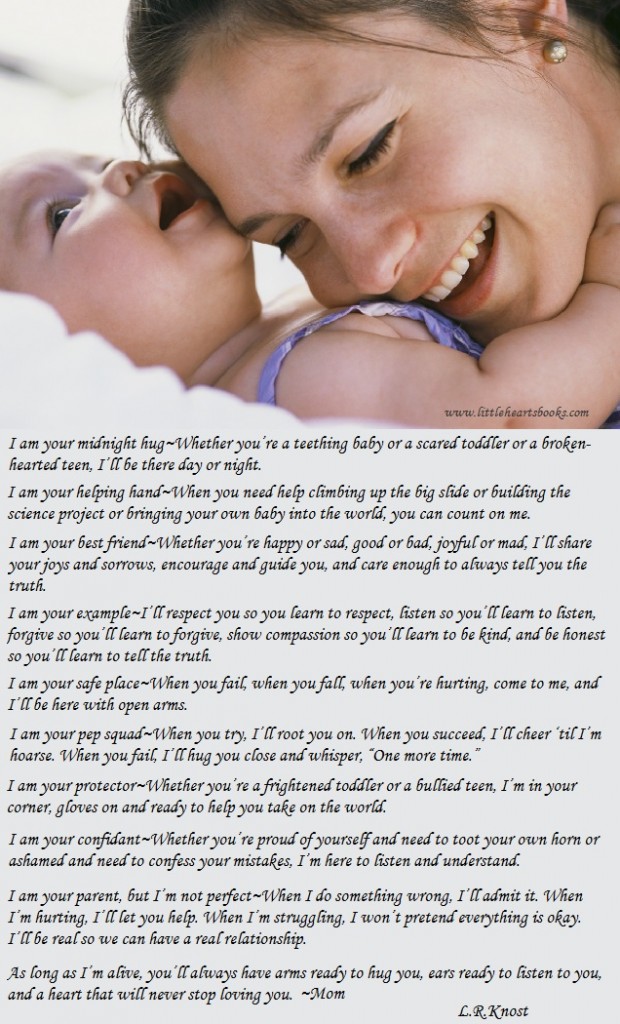
Related posts:
Backtalk is Communication…LISTEN
The Gift of a Strong-Willed Child
Bridge Over Troubled Waters~Parenting a ‘Problem’ Child
Two Thousand Connection Points a Day: Attachment Parenting Beyond Infancy
A Boy, A Girl, and A Baby~Journey to Gentle Parenting
 Award-winnning author, L.R.Knost, is the founder and director of the children's rights advocacy and family consulting group, Little Hearts/Gentle Parenting Resources, and Editor-in-Chief of Holistic Parenting Magazine. Books by L.R.Knost include Whispers Through Time: Communication Through the Ages and Stages of Childhood ; Two Thousand Kisses a Day: Gentle Parenting Through the Ages and Stages ; The Gentle Parent: Positive, Practical, Effective Discipline ; and Jesus, the Gentle Parent: Gentle Christian Parenting the first four books in the Little Hearts Handbook gentle parenting series, and children’s picture books Petey’s Listening Ears and the soon-to-be-released Grumpykins series.
Award-winnning author, L.R.Knost, is the founder and director of the children's rights advocacy and family consulting group, Little Hearts/Gentle Parenting Resources, and Editor-in-Chief of Holistic Parenting Magazine. Books by L.R.Knost include Whispers Through Time: Communication Through the Ages and Stages of Childhood ; Two Thousand Kisses a Day: Gentle Parenting Through the Ages and Stages ; The Gentle Parent: Positive, Practical, Effective Discipline ; and Jesus, the Gentle Parent: Gentle Christian Parenting the first four books in the Little Hearts Handbook gentle parenting series, and children’s picture books Petey’s Listening Ears and the soon-to-be-released Grumpykins series.
When Children Hit~10 Tips for Parents
[Portions reprinted from The Gentle Parent: Positive, Practical, Effective Discipline by L.R.Knost. Two Thousand Kisses a Day: Gentle Parenting Through the Ages and Stages and Whispers Through Time: Communication Through the Ages and Stages of Childhood also available on Amazon and through other major retailers.]
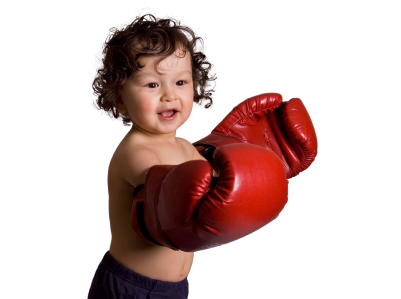 Toddlers and preschoolers are still in the early stages of learning to communicate verbally. Add to that the fact that they have little-to-no impulse control and very immature social skills, and you’ve got a recipe for an instinctive physical response (i.e. hitting, kicking, biting, hair pulling, throwing things, etc.) to situations in which they are frustrated, angry, scared, or just tired and out-of-sorts.
Toddlers and preschoolers are still in the early stages of learning to communicate verbally. Add to that the fact that they have little-to-no impulse control and very immature social skills, and you’ve got a recipe for an instinctive physical response (i.e. hitting, kicking, biting, hair pulling, throwing things, etc.) to situations in which they are frustrated, angry, scared, or just tired and out-of-sorts.
Many parents who practice gentle discipline wonder where their little one picked up the behavior, not realizing that it is a normal and age-appropriate reaction, albeit an unacceptable one. Very often parents are advised to spank their child to train them not to hit others, especially those who are smaller and weaker than they are. (more…)
 Award-winnning author, L.R.Knost, is the founder and director of the children's rights advocacy and family consulting group, Little Hearts/Gentle Parenting Resources, and Editor-in-Chief of Holistic Parenting Magazine. Books by L.R.Knost include Whispers Through Time: Communication Through the Ages and Stages of Childhood ; Two Thousand Kisses a Day: Gentle Parenting Through the Ages and Stages ; The Gentle Parent: Positive, Practical, Effective Discipline ; and Jesus, the Gentle Parent: Gentle Christian Parenting the first four books in the Little Hearts Handbook gentle parenting series, and children’s picture books Petey’s Listening Ears and the soon-to-be-released Grumpykins series.
Award-winnning author, L.R.Knost, is the founder and director of the children's rights advocacy and family consulting group, Little Hearts/Gentle Parenting Resources, and Editor-in-Chief of Holistic Parenting Magazine. Books by L.R.Knost include Whispers Through Time: Communication Through the Ages and Stages of Childhood ; Two Thousand Kisses a Day: Gentle Parenting Through the Ages and Stages ; The Gentle Parent: Positive, Practical, Effective Discipline ; and Jesus, the Gentle Parent: Gentle Christian Parenting the first four books in the Little Hearts Handbook gentle parenting series, and children’s picture books Petey’s Listening Ears and the soon-to-be-released Grumpykins series.
Picky Eater? Here’s Help!
[Reprinted from Two Thousand Kisses a Day: Gentle Parenting Through the Ages and Stages by L.R.Knost. Whispers Through Time: Communication Through the Ages and Stages of Childhood and The Gentle Parent: Positive, Practical, Effective Discipline also now available on Amazon and through other major retailers.]
~~~~~~~~~~~~~~~~~~~~~
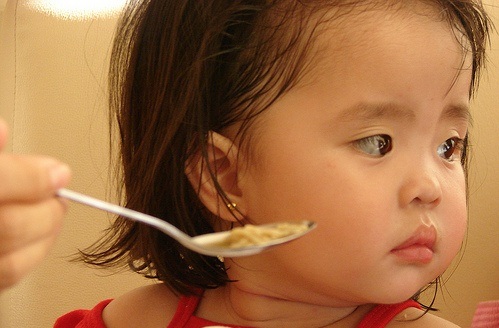 I was one of those children who was incredibly picky when it came to food and, despite my mom’s gently enforced ‘one bite rule,’ I went on to become an incredibly picky eater as an adult, as well. I vividly remember as a young child gagging as I tried to force down a bite, my throat feeling like it was closing up, and like there was no way food was going to fit through there. As a very compliant child, it bothered me immensely to disappoint my mom, and, being the logical person that I was even at that young age, I remember feeling that her expectations were very reasonable and being frustrated at my own inability to comply.
I was one of those children who was incredibly picky when it came to food and, despite my mom’s gently enforced ‘one bite rule,’ I went on to become an incredibly picky eater as an adult, as well. I vividly remember as a young child gagging as I tried to force down a bite, my throat feeling like it was closing up, and like there was no way food was going to fit through there. As a very compliant child, it bothered me immensely to disappoint my mom, and, being the logical person that I was even at that young age, I remember feeling that her expectations were very reasonable and being frustrated at my own inability to comply.
Fast forward a few years to when I began having children of my own and needed to make parenting decisions about everything from breastfeeding to cosleeping to discipline. On my journey to gentle parenting I revisited my childhood memories often, finding myself appreciating my mom’s gentleness and her way of using silliness to help me see the ‘silver lining’ in life when things were hard. In some things, I chose to follow the parenting path my mom took, and in others I took a different course and blazed my own trail.
When I was at university, I worked as a certified nutrition consultant with a focus on natural approaches to nutrition, health, and fitness. I took that knowledge, along with my studies in developmental psychology, human behavior, and communication, and incorporated all of it into my parenting decisions.
As I muddled through the toddler years with my firstborn, I decided to take an approach to nutrition that was unheard of, as far as I knew. I would offer to nurse, offer the food on my plate, and offer food I’d made specifically for him, and then let my little man decide. That was the beginning of our baby led weaning, though I didn’t know that term at the time.
What I discovered then and have seen proven time and again through the years with my own six very different children as well as with the families I’ve worked with is that, given the freedom to choose, children will generally experiment with more textures and tastes than if they are forced to eat their parents’ choice of food for them. It’s simply human nature that, if a child (or an adult, for that matter!) knows that they don’t have to try a new food and that they can run to the trashbin and spit it out if they do try it and don’t like it, then they are far, far more likely to give it a chance. And if they don’t try it the first time it’s offered, or if they do try it and don’t like it, making it available again off and on in the future will give them more opportunities to try the food and perhaps end up liking it when their tastes mature a bit more.
In our home, my children know that if they don’t like what’s being served for a meal there is always an alternative in the form of a PB&J or a reheat later if they just aren’t hungry at mealtime, though if we’re sitting down together I do expect them to sit with the family and chat with us while we eat. Even if they like the food being served, they may not feel hungry for a heavy meal just then or perhaps the last time they ate that meal their tummy got upset or maybe there are other reasons they don’t want the meal that they simply can’t articulate. As the adult, I can choose to make an issue out of it and end up in an unnecessary power struggle, or I can choose to offer my children the same respect I offer myself, because you can bet your bottom dollar that if I don’t want to eat something, I’m not eating it!
Among the many benefits of this approach, beyond the greater propensity for a child to experiment with tastes and textures and beyond the elimination of mealtime battles, I also saved myself a ton of mommy guilt through the years. I had no way of knowing early on that my renaissance girl had Sensory Processing Disorder which was strongly affecting her ability to eat or that my little caboose was missing an enzyme and couldn’t eat meat. Had I spent their toddler years forcing foods on them and engaging in coercive or punitive mealtime parenting, the damage to our relationship, not to mention their health, could have been disastrous. Additionally, children who feel powerless over their lives can begin trying to recapture a sense of power by exercising excessive control over their eating with the danger of a resulting eating disorder when they get into their teen years.
So, on a practical level how do you get a toddler or preschooler to eat? Well, first and foremost, rigidly scheduling mealtimes creates a battleground in and of itself. Toddlers’ and preschoolers’ ever-shifting growth patterns cause them to go through slow-growth periods where they simply aren’t hungry and other periods where they’re hungry 24/7! Grazing, or eating multiple small meals and snacks throughout the day, not only fits these growth patterns better, but is actually a much healthier way for all of us to eat because it stabilizes blood sugar which, when low, leads to overeating as does simply eating because ‘it’s time.’ Teaching our little ones to listen to their bodies’ hunger cues is a hugely positive step toward avoiding obesity later in life, as well!
Secondly, a combination of keeping little ones active so they work up a good appetite (which also sets them on the path toward an active physical lifestyle!) and offering a variety of healthy foods throughout the day will typically be all it takes to meet their nutrition requirements. As a general guideline, toddlers and preschoolers need:
- Two to three servings of dairy (i.e. 1 oz. cheese, ½ cup milk, ½ cup yogurt);
- Four to six servings of grains (i.e. ½ slice bread, ½ cup non-sugared cereal, ¼ cup pasta, 2 crackers);
- Two servings of protein (i.e. two 1” squares of chicken, fish, or beef);
- Two to three servings of veggies (i.e. 2 tbs peas, corn, cauliflower, etc);
- And two to three servings of fruit (i.e. ½ banana, apple, orange, etc., ¼ cup raisins, blueberries, raspberries, 3-4 strawberries or grapes, etc)
Here are some fun ways to invite your little ones to make healthy eating choices:
~Breakfast ideas~

- Need an easy and healthy breakfast for little ones? Try an ice cream cone filled with almonds & bite sized chunks of fruit & cheese!
- Start little people’s day healthy & happy. Make a smiley face clock on their plate with almonds, cheese & fruit with yogurt to dip them in!
- Try making ‘apple cookies’ (apples sliced into round discs) into faces with almonds, raisins & cheese!
- Sundae breakfast! Yogurt sprinkled with granola & raisins & nuts & drizzled with local honey (helps control seasonal allergies, too), yummy! *Note: Never feed honey to a baby under a year old.

- Here comes the sun! Make frozen pancakes more healthy by surrounding them with fruit & topping with berries & almonds & drizzling with local honey!
~Lunch ideas~

- Banana Boats~Slice of whole wheat bread spread with peanut butter & local honey & wrapped around a banana. Top with just a sprinkle of brown sugar for a treat!
- Double Trouble~Celery, carrot & pretzel sticks with a scoop of cottage cheese & a scoop of peanut butter for double dipping!
- Picasso PB&J’s~Round whole wheat flat bread with small dollops of peanut butter, fruit preserves & yogurt around the edge in a colorful palate with pretzel sticks for paint brushes!
~Dinner ideas~
- Boil some cauliflower, carrots, zucchini & yellow squash until a bit mushy & puree.
1) Mix with your favorite meatloaf recipe for a hidden veggie serving!
2) Mix with spaghetti sauce & freeze in single serving containers.

- Spaghetti Twisters~Make rotini noodles instead of spaghetti noodles for a cute ‘twist’ and add your special spaghetti sauce for a tornado of veggie goodness!
- Pizza Racers~Use rectangular flatbread & lightly coat with olive oil and broil for a couple of minutes to crisp it up, then add your souped-up spaghetti sauce & let your little ones top with mozzarella ‘racing stripes’ & pepperoni ‘racing tires’ for a super-charged dinner!

- Pureed cauliflower also works great mixed with mac & cheese, stuffing, and mashed potatoes for a hidden veggie to round out any meal!
Related posts:
Toddlers, Tantrums, and Time-Ins, Oh My!
Practical Gentle Discipline Guide
Tots to Teens~Communication Through the Ages and Stages
A Place to Rest~Becoming Your Child’s Safe Harbor
Love in the Time of Cosleeping
Your Baby isn’t Trying to Annoy You; He’s Trying to Communicate!
 Award-winnning author, L.R.Knost, is the founder and director of the children's rights advocacy and family consulting group, Little Hearts/Gentle Parenting Resources, and Editor-in-Chief of Holistic Parenting Magazine. Books by L.R.Knost include Whispers Through Time: Communication Through the Ages and Stages of Childhood ; Two Thousand Kisses a Day: Gentle Parenting Through the Ages and Stages ; The Gentle Parent: Positive, Practical, Effective Discipline ; and Jesus, the Gentle Parent: Gentle Christian Parenting the first four books in the Little Hearts Handbook gentle parenting series, and children’s picture books Petey’s Listening Ears and the soon-to-be-released Grumpykins series.
Award-winnning author, L.R.Knost, is the founder and director of the children's rights advocacy and family consulting group, Little Hearts/Gentle Parenting Resources, and Editor-in-Chief of Holistic Parenting Magazine. Books by L.R.Knost include Whispers Through Time: Communication Through the Ages and Stages of Childhood ; Two Thousand Kisses a Day: Gentle Parenting Through the Ages and Stages ; The Gentle Parent: Positive, Practical, Effective Discipline ; and Jesus, the Gentle Parent: Gentle Christian Parenting the first four books in the Little Hearts Handbook gentle parenting series, and children’s picture books Petey’s Listening Ears and the soon-to-be-released Grumpykins series.
To a Toddler Sharing is a 4 Letter Word~MINE!
[Reprinted from Two Thousand Kisses a Day: Gentle Parenting Through the Ages and Stages by L.R.Knost. Whispers Through Time: Communication Through the Ages and Stages of Childhood and The Gentle Parent: Positive, Practical, Effective Discipline also now available on Amazon and through other major retailers.]
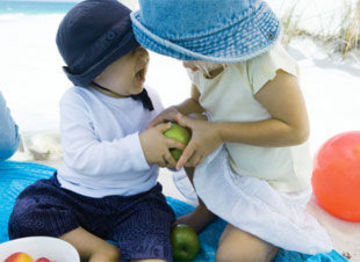 Almost from the moment a baby is born, parents teach them not to share. “No, no, sweetie. That’s mommy’s” and “That’s daddy’s, not yours” accompanied by the removal of whatever the forbidden item is are daily realities for little ones. This is unavoidable, of course, since bacteria-ridden keys don’t belong in little mouths and iphones don’t work well when soaked in drool.
Almost from the moment a baby is born, parents teach them not to share. “No, no, sweetie. That’s mommy’s” and “That’s daddy’s, not yours” accompanied by the removal of whatever the forbidden item is are daily realities for little ones. This is unavoidable, of course, since bacteria-ridden keys don’t belong in little mouths and iphones don’t work well when soaked in drool.
But the challenge comes when our little ‘reflectors’ are expected to share their toys with anyone and everyone who takes a liking to them. (Keep in mind that “their toys” as defined by a toddler are anything they own, are playing with, want to play with, don’t want to play with but want to remain available, etc.) It’s fully acceptable for us adults to not share our ‘toys’ with others, though. How often do we invite friends over and hand them the keys to our car? And yet we get to choose our own friends, do the inviting, and we have adult reasoning skills and judgment in place…things small children don’t have control over or access to!
The primary learning mode for little ones is imitation, but still we expect them to somehow have the cognitive maturity to learn to share despite their parents not sharing their ‘toys’ with them and despite seeing their parents not sharing their ‘toys’ with their own friends.
On top of that, we’re expecting them to grasp some pretty intricate and tricky relational nuances. What does ‘being a good friend’ entail? Why is someone taking something I want an acceptable part of friendship? If they can take what I want, why can’t I take what they want?
And, to round off the difficulty, ownership is an advanced, abstract concept and sharing is even more so. The difference between sharing and giving away forever or between someone borrowing your things and someone stealing from you is rather nebulous in the mind of a child. Now add in a complete inability to grasp time concepts (They get my toy for a minute? How long is a minute? When mommy tells me ‘just a minute’ when she’s on the phone it seems like forever before she’s done!) and to understand other abstract concepts such as permanence, and you can see the murky waters tiny people are expected to navigate when it comes to understanding sharing!
Obviously, little ones need help overcoming all of these obstacles. Punishing them, calling them selfish brats, forcing them to share, etc. are all counterproductive, not to mention damaging to the very relationship that is pivotal to eventual understanding of the concept of sharing. Going back to that primary learning mode of imitation, the key to teaching a child to share lies in the trust relationship being built by gentle, responsive parenting:
1.) When a child is secure in their relationship with their parents, when they know they will be heard, when they trust that their needs will be met quickly and consistently, much of the impetus behind the refusal to share is removed simply because the child isn’t living in a constant state of ‘fight or flight’ response. (This is not to say they will share freely, no matter how gentle the parenting. The afore mentioned obstacles are still in play, and your little ones are still human. What it does mean is that some of the impediments to sharing are removed and the stage is set for learning.)
2.) Within the context of the parent/child relationship, be mindful of how often you say ‘no’ or ‘mine’ and try to offer alternatives in the moment to model sharing.
3.) Be aware of the fact that your child isn’t choosing their own friends at this point and neither they nor their little playmates are skilled socially yet. Stay nearby and in tune with your little one so you can step in and help them deal with any sharing difficulties such as snatching or tug-o-war with a toy before they escalate.
4.) Use concrete words to guide your little one in social situations. For example, try “Use your gentle hands” instead of “Don’t snatch/hit/push.”
5.) Resist the embarrassed-adult-knee-jerk-reaction of scolding your child, snatching toys from them to give to another child, and punishing your child for a normal developmental stage. That kind of reaction not only doesn’t model self-control, but it also doesn’t model acceptable social behavior, which is exactly what you’re upset about your child not displaying!
6.) Prepare for playdates by putting away any treasured toys such as special lovies or new toys that you know your little one will have trouble sharing. Honoring their feelings about these few special things will help them to feel more comfortable sharing their other toys because you are showing them in a concrete manner that you will help them to protect and preserve the things that matter to them.
7.) Play sharing games with your child daily to practice this advanced skill. When she says “Mine!” respond by smiling, picking up something of yours you don’t mind her playing with, and saying, “This is mine. I’ll share!” and hand it to her. Often little ones will start running around picking up their toys and bringing them to you to ‘share’ and wait for it to be reciprocated, resulting in a back and forth, back and forth sharing game that taps into another excellent learning mode for children…play!
Above all, keep in mind that sharing is a learned skill and it will take time for your 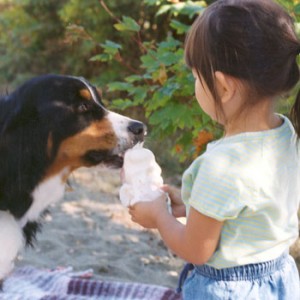 small one to grow into a socially skilled little butterfly. Creating an atmosphere of trust, modeling sharing, and honoring their feelings will surround them with a safe environment in which they can develop the skills needed to become the most treasured of friends!
small one to grow into a socially skilled little butterfly. Creating an atmosphere of trust, modeling sharing, and honoring their feelings will surround them with a safe environment in which they can develop the skills needed to become the most treasured of friends!
Related posts:
Toddlers, Tantrums, and Time-Ins, Oh My!
Testing the Boundaries~What’s A Parent To Do?
Babes and Boundaries~A Gentle Parenting Perspective
Your Baby isn’t Trying to Annoy You; He’s Trying to Communicate!
 Award-winnning author, L.R.Knost, is the founder and director of the children's rights advocacy and family consulting group, Little Hearts/Gentle Parenting Resources, and Editor-in-Chief of Holistic Parenting Magazine. Books by L.R.Knost include Whispers Through Time: Communication Through the Ages and Stages of Childhood ; Two Thousand Kisses a Day: Gentle Parenting Through the Ages and Stages ; The Gentle Parent: Positive, Practical, Effective Discipline ; and Jesus, the Gentle Parent: Gentle Christian Parenting the first four books in the Little Hearts Handbook gentle parenting series, and children’s picture books Petey’s Listening Ears and the soon-to-be-released Grumpykins series.
Award-winnning author, L.R.Knost, is the founder and director of the children's rights advocacy and family consulting group, Little Hearts/Gentle Parenting Resources, and Editor-in-Chief of Holistic Parenting Magazine. Books by L.R.Knost include Whispers Through Time: Communication Through the Ages and Stages of Childhood ; Two Thousand Kisses a Day: Gentle Parenting Through the Ages and Stages ; The Gentle Parent: Positive, Practical, Effective Discipline ; and Jesus, the Gentle Parent: Gentle Christian Parenting the first four books in the Little Hearts Handbook gentle parenting series, and children’s picture books Petey’s Listening Ears and the soon-to-be-released Grumpykins series.
Play~Bubbles and Babies and Butterflies
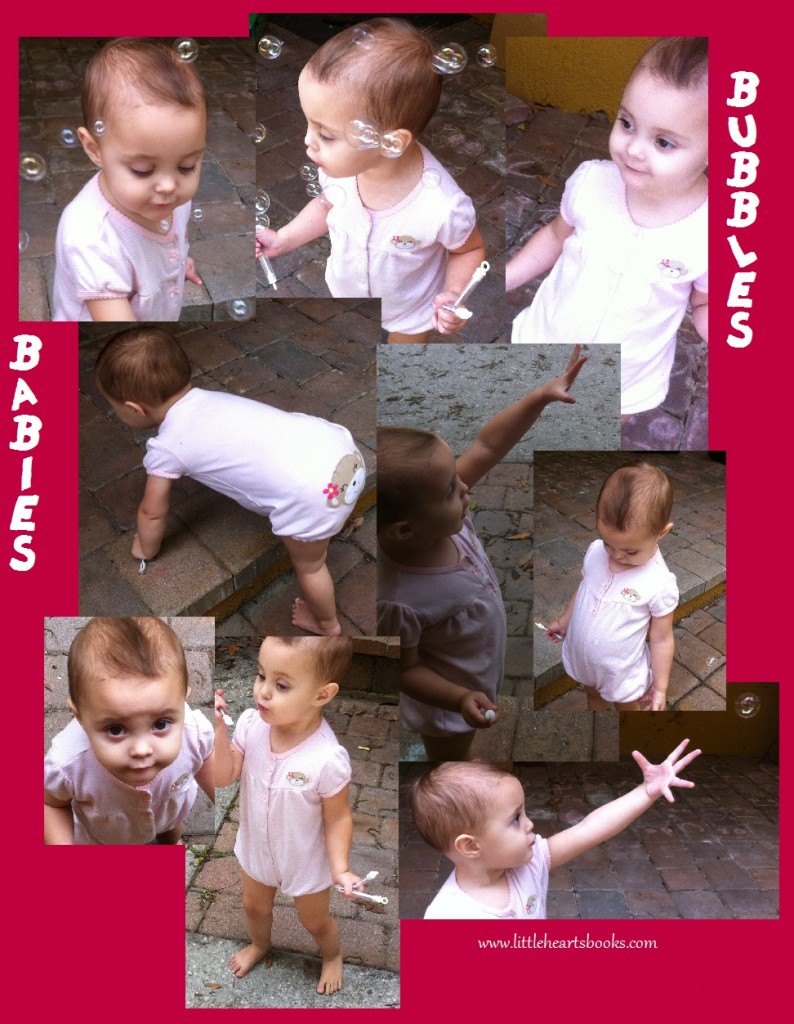 Sunshiny days fly on butterfly wings
Sunshiny days fly on butterfly wings
Filled with wading pools, sidewalk chalk, springy-time things
Bubbles and babies and bear-bottomed rompers
Mudpies and magpies and jump-rope trick jumpers
Swinging and sliding and climbing and running
Learning, discovering, growing, becoming
No time to waste they are seizing the day
The work of a child is simply to play

Related posts:
On a Winnie the Pooh style ‘long explore’ my little Pooh Bear discovered the world in The Many Adventures of My Little Pooh Bear
Children who love to read…READ! Engaging children’s hearts in the wonder of reading instead of just training their minds in its mechanics. Raising Bookworms
Think homeschooled children are unsocialized, over-controlled, locked-away-from-the-world misfits? Think again! My Renaissance Girl
In the world of a child wonders are as simple as sticks and sheets, leaves and books, boxes and giggles, and the promise in a rainy day. The Seven Wonders of the World of Childhood
There is such a rush these days to get children sleeping through the night, weaned off the breast, eating solid foods, potty trained, reading independently, and on and on, that we seem to have lost the ability to simply enjoy life as it happens and let our children do the same. A Return to Childhood
Parenting choices strongly impact the level and type of attachment a child develops and, by extension, the development of a love of learning. A love of learning grows when it isn’t stifled by fear or stress or regimented by over-structuring or a focus on achievement or competition. Parents fostering a healthy attachment are thus also fostering a life-long love of learning in their children. Live to Play~Play to Learn~Learn to Live!
Successful reading means far more than possessing the ability to read. Engaging the hearts of students moves reading success beyond a life skill and turns it into a life style. And graphic novels are too powerful of a tool in our arsenal to be disregarded because of pride or prejudice. Raising Super Readers~The MARVELous Power of Comic Books!
If you give a toddler a book
He’ll climb into your lap
While he’s in your lap
He might lay his head on your chest
When he lays his head on your chest
He’ll hear your heartbeat
When he hears your heartbeat
He’ll probably ask if you can hear…
 Award-winnning author, L.R.Knost, is the founder and director of the children's rights advocacy and family consulting group, Little Hearts/Gentle Parenting Resources, and Editor-in-Chief of Holistic Parenting Magazine. Books by L.R.Knost include Whispers Through Time: Communication Through the Ages and Stages of Childhood ; Two Thousand Kisses a Day: Gentle Parenting Through the Ages and Stages ; The Gentle Parent: Positive, Practical, Effective Discipline ; and Jesus, the Gentle Parent: Gentle Christian Parenting the first four books in the Little Hearts Handbook gentle parenting series, and children’s picture books Petey’s Listening Ears and the soon-to-be-released Grumpykins series.
Award-winnning author, L.R.Knost, is the founder and director of the children's rights advocacy and family consulting group, Little Hearts/Gentle Parenting Resources, and Editor-in-Chief of Holistic Parenting Magazine. Books by L.R.Knost include Whispers Through Time: Communication Through the Ages and Stages of Childhood ; Two Thousand Kisses a Day: Gentle Parenting Through the Ages and Stages ; The Gentle Parent: Positive, Practical, Effective Discipline ; and Jesus, the Gentle Parent: Gentle Christian Parenting the first four books in the Little Hearts Handbook gentle parenting series, and children’s picture books Petey’s Listening Ears and the soon-to-be-released Grumpykins series.
The Many Adventures of My Little Pooh Bear
“There is nothing that human beings do, know, think, hope, and fear that has not been attempted, experienced, practiced, or at least anticipated in children’s play.”~Heidi Britz-Crecelius
As A.A.Milne wrote in The Many Adventures of Winnie the Pooh, we went on a long ‘explore’ the other day simply because “It was a drowsy summer [well, actually, spring] afternoon, and the Forest was full of gentle sounds…”
My poor little Pooh Bear has been sick for weeks now, and I’ve been taking her out in the sunshine for a daily dose of vitamin D and fresh air to supplement her traditional medicines. On this particular day, which just happened to be the first day of spring, I played the role of adoring paparazzi and just snapped picture after picture as my little explorer wandered here and there at her own toddling pace. Looking over the myriad of pictures later was educational…for me!
My little explorer studied…
Light and Shadow as she danced with her shadow…
and moved leaves back and forth, back and forth from sun to shade and back again.
Texture as she went from the wooden foot bridge to the concrete and studied the hard and soft, the rough and smooth, the cold and warm.
Physics as she threw leaves into the breeze and discovered how the small ones fluttered away and the big ones fell unless she crumpled them into smaller pieces.
Directionality as she put leaves over the railing, through the railing, and under the railing.
And so much more, all in a supervised, but undirected day of play!

“Sometimes, if you stand on the bottom rail of a bridge and lean over to watch the river slipping slowly away beneath you, you will suddenly know everything there is to be known.”~A.A.Milne
Studies are confirming what early childhood education experts have known for years…Formal instruction can interfere with a preschooler’s creativity and problem-solving skills. A.A.Milne clearly understood that fact long ago when he included this thought-provoking dialogue in his classic children’s picture book,
“Rabbit’s clever,” said Pooh thoughtfully.
“Yes,” said Piglet, “Rabbit’s clever.”
“And he has a Brain.”
“Yes,” said Piglet, “Rabbit has a Brain.”
There was a long silence.
“I suppose,” said Pooh, “that that’s why he never understands anything.”
Gail Connel of Moving Smart puts it this way, “When we say ‘learning’ we actually mean ‘understanding,’ described by Merriam-Webster as ‘to grasp the meaning of.'” She goes on to give an example:
“Point to the top of your head, then point to the top of your toe. You pointed in two completely different directions. So what does ‘top’ mean? And if ‘top’ is in both of those places, then where is the top of the page?
Only after learning ‘top’ in many different ways will they begin to understand that ‘top’ is more than a location, it’s a concept. And to do that, they must experience it – literally and physically — by pointing to the top, touching the top, crawling along the top, running to the top, reaching the top, and on and on. And while they’re doing that, your use of the word ‘top’ helps them associate what they’re doing with what it’s called.
LANGUAGE + EXPERIENCE = UNDERSTANDING”

“Promise me you'll always remember: You're braver than you believe, and stronger than you seem, and smarter than you think.”~A.A.Milne
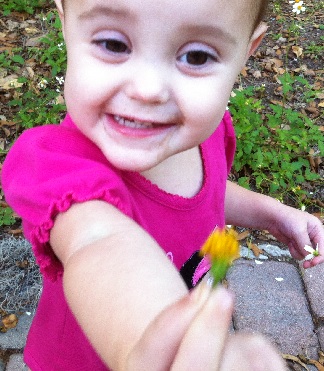
“Yesterday is history, tomorrow is a mystery, but today is a gift. That's why we call it the present." ~Winnie the Pooh
Related posts:
Children who love to read…READ! Engaging children’s hearts in the wonder of reading instead of just training their minds in its mechanics. Raising Bookworms
Think homeschooled children are unsocialized, over-controlled, locked-away-from-the-world misfits? Think again! My Renaissance Girl
In the world of a child wonders are as simple as sticks and sheets, leaves and books, boxes and giggles, and the promise in a rainy day. The Seven Wonders of the World of Childhood
There is such a rush these days to get children sleeping through the night, weaned off the breast, eating solid foods, potty trained, reading independently, and on and on, that we seem to have lost the ability to simply enjoy life as it happens and let our children do the same. A Return to Childhood
Parenting choices strongly impact the level and type of attachment a child develops and, by extension, the development of a love of learning. A love of learning grows when it isn’t stifled by fear or stress or regimented by over-structuring or a focus on achievement or competition. Parents fostering a healthy attachment are thus also fostering a life-long love of learning in their children. Live to Play~Play to Learn~Learn to Live!
Successful reading means far more than possessing the ability to read. Engaging the hearts of students moves reading success beyond a life skill and turns it into a life style. And graphic novels are too powerful of a tool in our arsenal to be disregarded because of pride or prejudice. Raising Super Readers~The MARVELous Power of Comic Books!
If you give a toddler a book
He’ll climb into your lap
While he’s in your lap
He might lay his head on your chest
When he lays his head on your chest
He’ll hear your heartbeat
When he hears your heartbeat
He’ll probably ask if you can hear…
 Award-winnning author, L.R.Knost, is the founder and director of the children's rights advocacy and family consulting group, Little Hearts/Gentle Parenting Resources, and Editor-in-Chief of Holistic Parenting Magazine. Books by L.R.Knost include Whispers Through Time: Communication Through the Ages and Stages of Childhood ; Two Thousand Kisses a Day: Gentle Parenting Through the Ages and Stages ; The Gentle Parent: Positive, Practical, Effective Discipline ; and Jesus, the Gentle Parent: Gentle Christian Parenting the first four books in the Little Hearts Handbook gentle parenting series, and children’s picture books Petey’s Listening Ears and the soon-to-be-released Grumpykins series.
Award-winnning author, L.R.Knost, is the founder and director of the children's rights advocacy and family consulting group, Little Hearts/Gentle Parenting Resources, and Editor-in-Chief of Holistic Parenting Magazine. Books by L.R.Knost include Whispers Through Time: Communication Through the Ages and Stages of Childhood ; Two Thousand Kisses a Day: Gentle Parenting Through the Ages and Stages ; The Gentle Parent: Positive, Practical, Effective Discipline ; and Jesus, the Gentle Parent: Gentle Christian Parenting the first four books in the Little Hearts Handbook gentle parenting series, and children’s picture books Petey’s Listening Ears and the soon-to-be-released Grumpykins series.
The Seven Wonders of the World of Childhood
[By L.R.Knost, author of Two Thousand Kisses a Day: Gentle Parenting Through the Ages and Stages, Whispers Through Time: Communication Through the Ages and Stages of Childhood, The Gentle Parent: Positive, Practical, Effective Discipline, and Jesus, the Gentle Parent: Gentle Christian Parenting available on Amazon and through other major retailers.]

According to the man whose name is synonymous with genius, “The true sign of intelligence is not knowledge but imagination.” ~Albert Einstein
And when it came to his genius, he said, “I have no special talent. I am only passionately curious.” ~Albert Einstein
Preserving the passionate curiosity that is a natural part of childhood, then, seems to be the most logical and effective mode of early childhood education. And it is as simple as encouraging the wonder of imagination…
In the world of a child wonders are as simple as sticks and sheets, leaves and books, boxes and giggles, and the promise in a rainy day.
- In the hands of a child a stick is a king’s scepter, an adventurer’s staff, a knight’s sword.
- In the eyes of a child a sheet is a fort waiting to be built, a sea waiting to be sailed, a cape waiting to be worn.
- In the fingers of a child a leaf is a tiny ship to blow across a puddle, a mini parasol for a snail, a triumphant flag atop a mud-castle.
- In the heart of a child a book is a map to a fairy forest, a flight on an alien spaceship, a ride on the back of a dragon.
- In the mind of a child a cardboard box is a boat sailing rough seas for China, a bridge over a raging river, a cave full of lost treasure.
- In the mouth of a child a giggle is an invitation to play, a mini song of happiness, a tiny voice of comfort.
- In the footsteps of a child the rain is a puddle to be splashed in new shoes, mud to be squished between little toes, a rainbow to be chased to the golden end.
In the wonderful, beautiful world of childhood, the morning wakes with trees that need to be climbed, 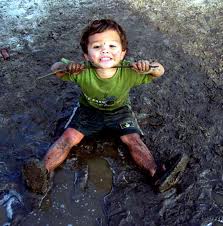 holes that need to be dug, and mudpies that need to be made. The world’s classroom teaches them that problems can be solved and obstacles can be conquered. When imaginations soar, everything becomes possible.
holes that need to be dug, and mudpies that need to be made. The world’s classroom teaches them that problems can be solved and obstacles can be conquered. When imaginations soar, everything becomes possible.
It is in the small moments of discovery that big dreams are born. When little fingers are buried in the earth, an archeologist has made his first dig. When curious eyes peer at stars through a paper-towel roll, an astronaut has made her first spacewalk. When small hands wrap a washcloth cast around a puppy’s paw, a doctor has healed his first patient.
Just as letters of the alphabet on their own have no meaning, but used in concert with each other can create poetry, literature, and song, so learning the mechanics of words and numbers alone has no purpose, but placed in the context of life being lived can create wonders as yet unseen.
‘Let the children play’ has become a clarion call in some parenting circles in recent years, and with good reason. With childhood obesity, illnesses, and depression rates all on the rise, examining the way we raise and educate our children is vital for the health of our children, our nation, and our future.
We need to find a place in our busy lives for children to be children, to enjoy the simple pleasures we enjoyed as children, to dream and imagine and create and become. Life is for living, and children are experts at living life to the fullest. We would do well to learn from them.
~~~~~~~~~~
My little funnyface enjoyed the movie version of The Lorax when we saw it last week, but then forgot all about it. But when we read the book together a few days later, it captured her imagination! She painted her face orange with face paints this morning, drew on a yellow Lorax mustache, and spent the entire day outside building a Lorax forest out of odds and ends she gathered from around the yard.
My sick baby has pneumonia and has been spiking a fever of up to 104 degrees the last few days. She’s been laminated to me, too sick to even hold up her little head, poor thing. But today when she saw a cardboard box she immediately climbed down off my lap and into the box where she played happily for a few minutes for the first time in days. Mommy’s heart was happy to see a little spark of my playful girl again, for sure. The power of a cardboard box knows no bounds!
Don’t believe in the wondrous power of play? Check out the next Steve Jobs/Bill Gates/Donald Trump in the making! Here’s the story of a nine year old boy, an old parts shop, and a cardboard box arcade:
Related posts:
Children who love to read…READ! Engaging children’s hearts in the wonder of reading instead of just training their minds in its mechanics. Raising Bookworms
Think homeschooled children are unsocialized, over-controlled, locked-away-from-the-world misfits? Think again! My Renaissance Girl
On a Winnie the Pooh style ‘long explore’ my little Pooh Bear discovered the world in ways only a toddler can do in…
Raising Super Readers~The MARVELous Power of Comic Books!
Playground Confessions~Look Who’s Talking!
Alphabet Fun~Imagination From A to Z!
Live to Play~Play to Learn~Learn to Live!
 Award-winnning author, L.R.Knost, is the founder and director of the children's rights advocacy and family consulting group, Little Hearts/Gentle Parenting Resources, and Editor-in-Chief of Holistic Parenting Magazine. Books by L.R.Knost include Whispers Through Time: Communication Through the Ages and Stages of Childhood ; Two Thousand Kisses a Day: Gentle Parenting Through the Ages and Stages ; The Gentle Parent: Positive, Practical, Effective Discipline ; and Jesus, the Gentle Parent: Gentle Christian Parenting the first four books in the Little Hearts Handbook gentle parenting series, and children’s picture books Petey’s Listening Ears and the soon-to-be-released Grumpykins series.
Award-winnning author, L.R.Knost, is the founder and director of the children's rights advocacy and family consulting group, Little Hearts/Gentle Parenting Resources, and Editor-in-Chief of Holistic Parenting Magazine. Books by L.R.Knost include Whispers Through Time: Communication Through the Ages and Stages of Childhood ; Two Thousand Kisses a Day: Gentle Parenting Through the Ages and Stages ; The Gentle Parent: Positive, Practical, Effective Discipline ; and Jesus, the Gentle Parent: Gentle Christian Parenting the first four books in the Little Hearts Handbook gentle parenting series, and children’s picture books Petey’s Listening Ears and the soon-to-be-released Grumpykins series.
Seuss-ified~Craft-astic~Snack-errific~Education-cool~Fun!
“You’re never too old, too wacky, too wild, to pick up a book and read to a child!”
Seussville~Read Across America
March 1st is World Book Day, and March 2nd is Dr. Seuss’ Birthday Extravaganza which includes the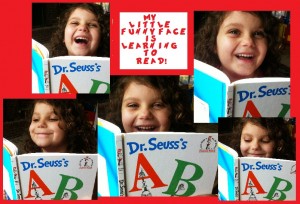 release of the much-anticipated new movie, The Lorax! If you’re a book-obsessed, homeschooling, movie-loving, Seussiac like I am, it’s practically a national holiday! And when you add my excitement over my newest little home-grown reader, it’s definitely time for a Seusserrific Celebration!
release of the much-anticipated new movie, The Lorax! If you’re a book-obsessed, homeschooling, movie-loving, Seussiac like I am, it’s practically a national holiday! And when you add my excitement over my newest little home-grown reader, it’s definitely time for a Seusserrific Celebration!
In honor of all of this wonderfulness and to help launch my new little reader into the wonderful world of books, I’ve been scouring the web, the bookshelves, and my scattered brain for all the Seussical fun I could find for my little people and yours. Here are a few of my finds!
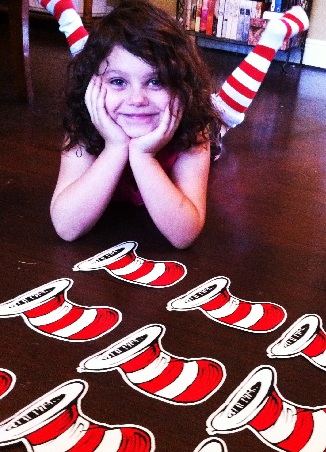 Staples has these awesome Cat in the Hat cutouts intended for use on a bulletin board, but we repurposed them for several games such as BIG LETTER~little letter Match-up and Seusstastic Scavenger Hunt. For BIG LETTER~little letter Match-up I drew capital letters and their counterparts on the backs of the cutouts and laid them out in a 3 x 3 grid. For Seusstastic Scavenger Hunt I wrote clues on the cutouts to help my little people find Dr. Seuss books I’d hidden throughout the house and tucked the clues in each book so that when they found one book and we read it, they’d find the next clue hidden in the pages of the book they’d just found…a two-fer! So fun!
Staples has these awesome Cat in the Hat cutouts intended for use on a bulletin board, but we repurposed them for several games such as BIG LETTER~little letter Match-up and Seusstastic Scavenger Hunt. For BIG LETTER~little letter Match-up I drew capital letters and their counterparts on the backs of the cutouts and laid them out in a 3 x 3 grid. For Seusstastic Scavenger Hunt I wrote clues on the cutouts to help my little people find Dr. Seuss books I’d hidden throughout the house and tucked the clues in each book so that when they found one book and we read it, they’d find the next clue hidden in the pages of the book they’d just found…a two-fer! So fun!
We also made up a Go Fish in the Bowl game matching upper and lower case letters. It’s just your basic Go Fish, but somehow on Cat in the Hat cut-outs it became magical!
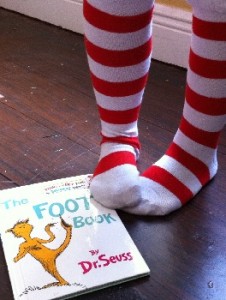 The simple addition of some stripey ‘Seuss Socks’ (Dollar Tree!) was enough to make The Foot Book even more engaging than it already is on its own!
The simple addition of some stripey ‘Seuss Socks’ (Dollar Tree!) was enough to make The Foot Book even more engaging than it already is on its own!
Some leftover pieces of an old game yielded a plastic Green Eggs and Ham to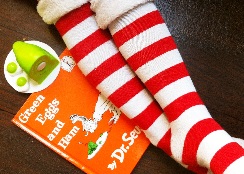 play a Would You~Could You spin on the old Mother May I game. We placed the Green Eggs and Ham game piece at one end of the room and took turns asking questions like ‘Would you, could you let me take three steps forward?’ and giving directions like ‘Could you, would you jump up and down and take one step back?’
play a Would You~Could You spin on the old Mother May I game. We placed the Green Eggs and Ham game piece at one end of the room and took turns asking questions like ‘Would you, could you let me take three steps forward?’ and giving directions like ‘Could you, would you jump up and down and take one step back?’
We’re putting together a Seuss Quiet Bag which we’ll be adding to over time, and I’m working on making a Cat in the Hat Calm-Me-Jar for our bag. I’ll post a picture here as soon as it’s done! Right now we’ve got favorite books and our Go Fish in the Bowl cards in this cute, little Seuss backpack I found at a thrift store.
Here it is! Meet the The Cat in the Hat Can Help You with That Calm-Me-Jar!
And here is my six year old’s contribution to the Seuss Birthday celebration~Seuss Tower! Watch out Donald, my little funny-face is out to trump you, lol!
Check out these 7 Tips for Raising Bookworms!
Here are some awesomely Seusstastic links to crafts and games and yummy Seuss treats you and your little ones will love!
Source: zakkalife.blogspot.com via Linda on Pinterest
Make Seusstastic Lorax trees from pencils!
Source: meetthedubiens.com via Linda on Pinterest
Oreos, white and red chocolate, and marshmallows equal Seussalicious Cat in the Hat cookies!
Source: madtownmacs.blogspot.com via Linda on Pinterest
A Seussville craft for little Seusslets to create!
And check out this abSeusslutely ObSeussed site for literally hundreds and hundreds of Seusstastic crafts, books, games, recipies, ideas, and links!
Related posts:
Children who love to read…READ! Engaging children’s hearts in the wonder of reading instead of just training their minds in its mechanics. Raising Bookworms
It’s time for a return to childhood, to simplicity, to running and climbing and laughing in the sunshine, to experiencing happiness instead of being trained for a lifetime of pursuing happiness…it’s time to let children be children again. A Return to Childhood
Think homeschooled children are unsocialized, over-controlled, locked-away-from-the-world misfits? Think again! My Renaissance Girl
A Seussical List of Parenting Tips!
Alphabet Fun~Imagination From A to Z!
Live to Play~Play to Learn~Learn to Live!
Making Money Matters Make Cents
One Slippery Sock & Other Silly Tools for your Parenting Toolbox!
 Award-winnning author, L.R.Knost, is the founder and director of the children's rights advocacy and family consulting group, Little Hearts/Gentle Parenting Resources, and Editor-in-Chief of Holistic Parenting Magazine. Books by L.R.Knost include Whispers Through Time: Communication Through the Ages and Stages of Childhood ; Two Thousand Kisses a Day: Gentle Parenting Through the Ages and Stages ; The Gentle Parent: Positive, Practical, Effective Discipline ; and Jesus, the Gentle Parent: Gentle Christian Parenting the first four books in the Little Hearts Handbook gentle parenting series, and children’s picture books Petey’s Listening Ears and the soon-to-be-released Grumpykins series.
Award-winnning author, L.R.Knost, is the founder and director of the children's rights advocacy and family consulting group, Little Hearts/Gentle Parenting Resources, and Editor-in-Chief of Holistic Parenting Magazine. Books by L.R.Knost include Whispers Through Time: Communication Through the Ages and Stages of Childhood ; Two Thousand Kisses a Day: Gentle Parenting Through the Ages and Stages ; The Gentle Parent: Positive, Practical, Effective Discipline ; and Jesus, the Gentle Parent: Gentle Christian Parenting the first four books in the Little Hearts Handbook gentle parenting series, and children’s picture books Petey’s Listening Ears and the soon-to-be-released Grumpykins series.

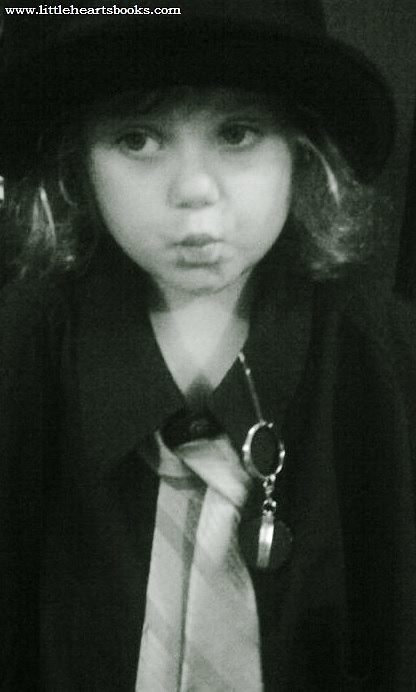 [Reprinted from
[Reprinted from 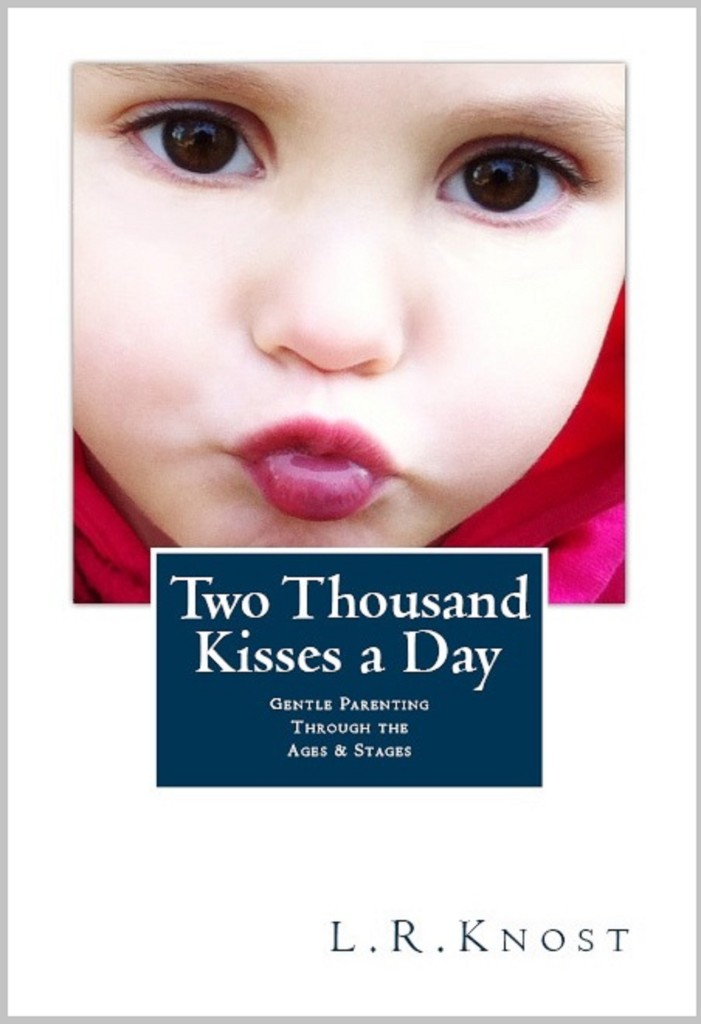
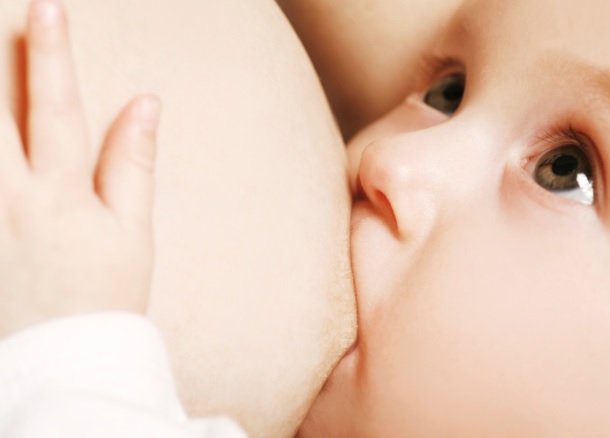 As a mother of six, I’ve been breastfeeding babies and toddlers for a cumulative 10+ years of my adult life (and counting!). That’s more than 3,650 days and nights I’ve spent nursing! For someone to spend that much of their lives committed to something, clearly they must believe it is worth the time, effort, and personal sacrifices involved. I do, and it is!
As a mother of six, I’ve been breastfeeding babies and toddlers for a cumulative 10+ years of my adult life (and counting!). That’s more than 3,650 days and nights I’ve spent nursing! For someone to spend that much of their lives committed to something, clearly they must believe it is worth the time, effort, and personal sacrifices involved. I do, and it is!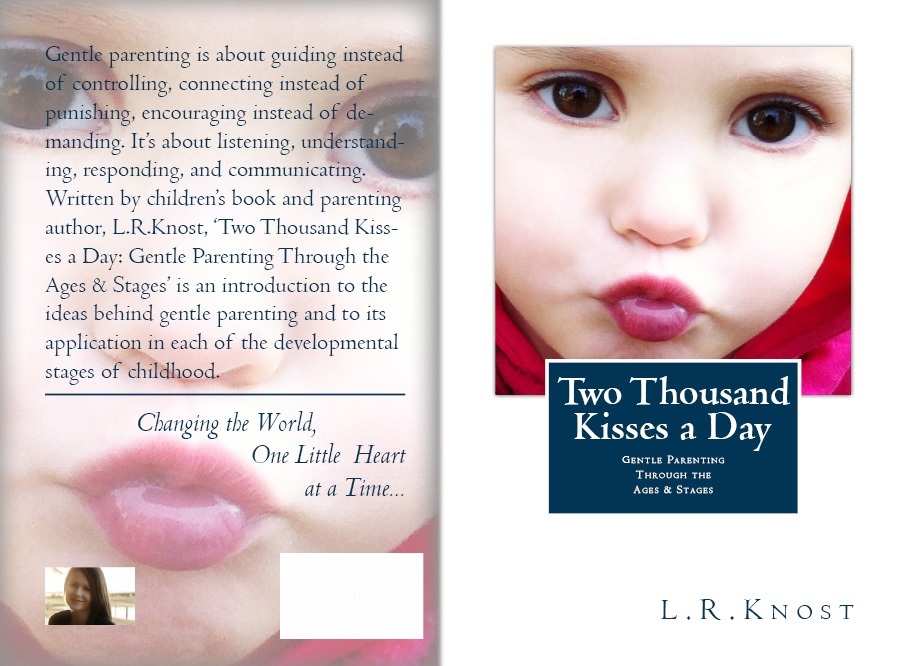
 There is no such thing as a ‘miracle’ weight-loss plan, but living a healthy, active life and eating nutritious meals doesn’t have to be all about sweat, sacrifice, and self-discipline, either. It can be about having fun, eating foods you love, and, best of all, it can fit right in with your lifestyle! By following a few basic nutritional guidelines and finding ways to fit exercise into your daily life, you can create your own ‘life plan’ and start moving toward your weight-loss and health goals.
There is no such thing as a ‘miracle’ weight-loss plan, but living a healthy, active life and eating nutritious meals doesn’t have to be all about sweat, sacrifice, and self-discipline, either. It can be about having fun, eating foods you love, and, best of all, it can fit right in with your lifestyle! By following a few basic nutritional guidelines and finding ways to fit exercise into your daily life, you can create your own ‘life plan’ and start moving toward your weight-loss and health goals.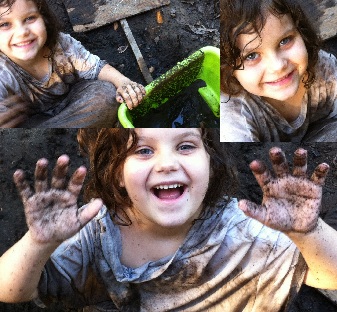


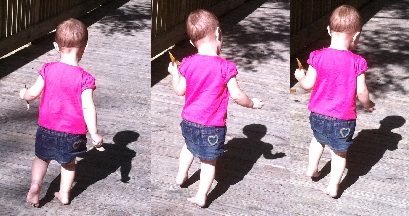

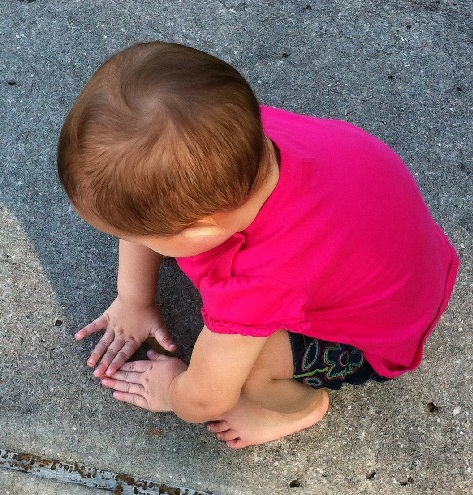
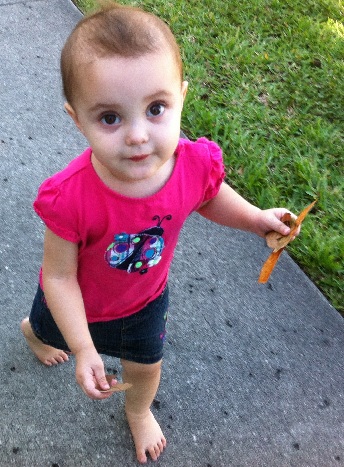
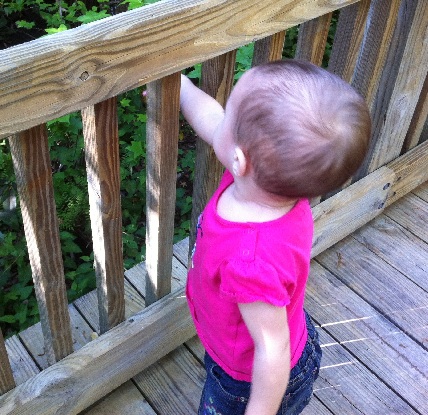
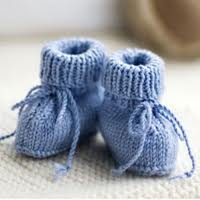
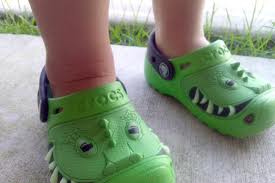

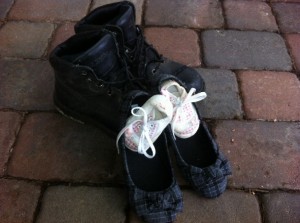

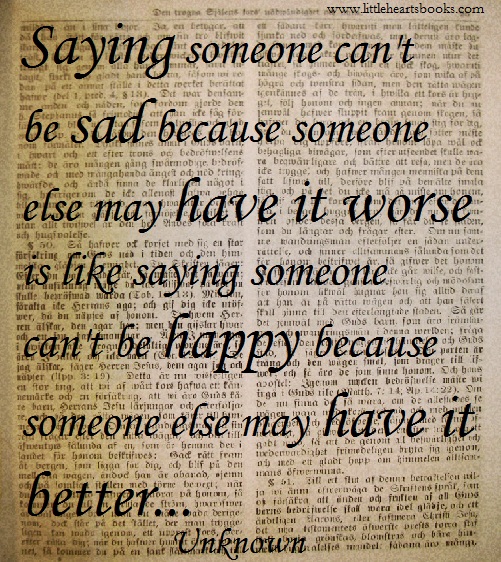
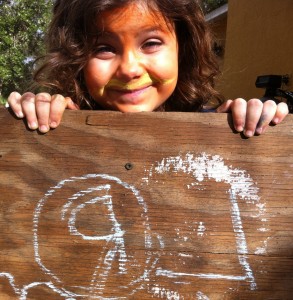
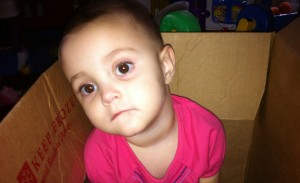
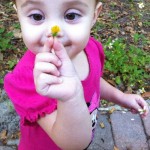
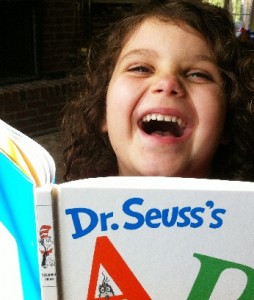
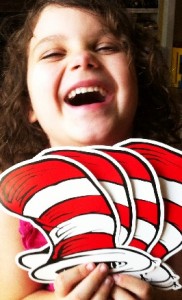
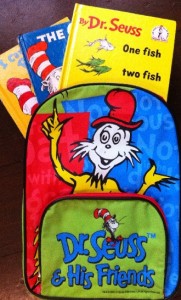

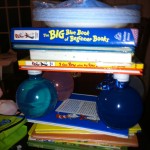
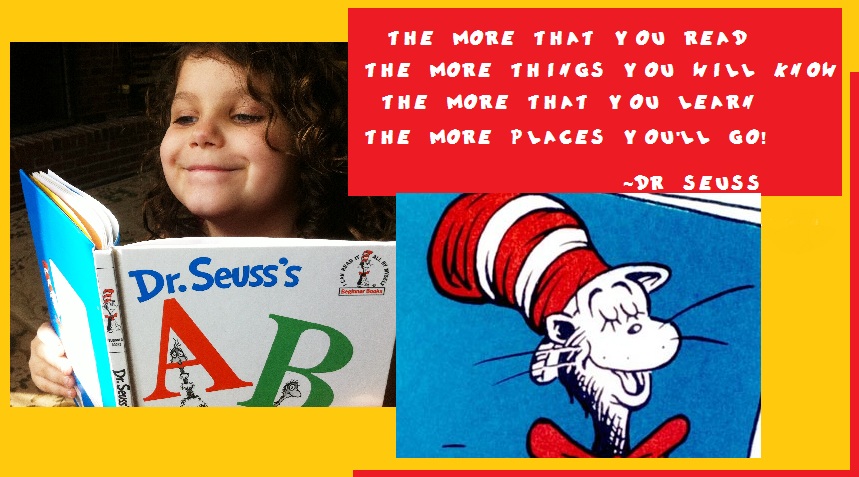




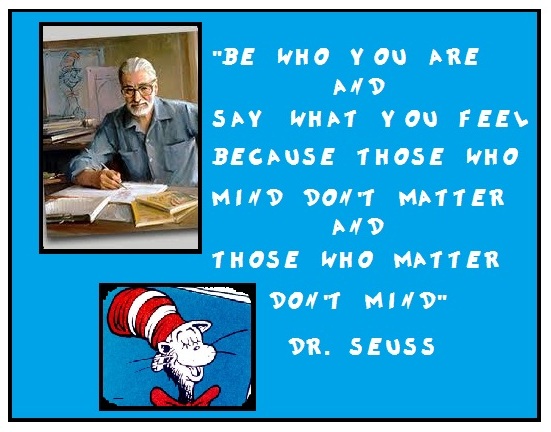
 There is such a rush these days to get children sleeping through the night, weaned off the breast, eating solid foods, potty trained, reading independently, and on and on, that we seem to have lost the ability to simply enjoy life as it happens and let our children do the same. Gone are the days of making mud-pies and playing in piles of leaves. They’ve been replaced with flashcards, language immersion (even in the womb!), educational dvd’s, and the like. Preschool has become the new kindergarten, with parents rushing to get on waiting lists for the ‘best of the best’ preschools, often even before their first prenatal appointment!
There is such a rush these days to get children sleeping through the night, weaned off the breast, eating solid foods, potty trained, reading independently, and on and on, that we seem to have lost the ability to simply enjoy life as it happens and let our children do the same. Gone are the days of making mud-pies and playing in piles of leaves. They’ve been replaced with flashcards, language immersion (even in the womb!), educational dvd’s, and the like. Preschool has become the new kindergarten, with parents rushing to get on waiting lists for the ‘best of the best’ preschools, often even before their first prenatal appointment!